By Seattle Dave • Updated: November 6, 2025
My Favorite Hotels in NYC
• 5-star: Mandarin
• 4-star: Archer • Pendry
• 3-star: citizenM
• For families: AKA
• For couples: Library • Crosby
• Times Square: Marriott
• Central Park: Pierre
• Penn Station: Renaissance
• Grand Central: Library
• Empire State Bldg: Langham
• Lower Manhattan: Crosby
• Financial District: Beekman
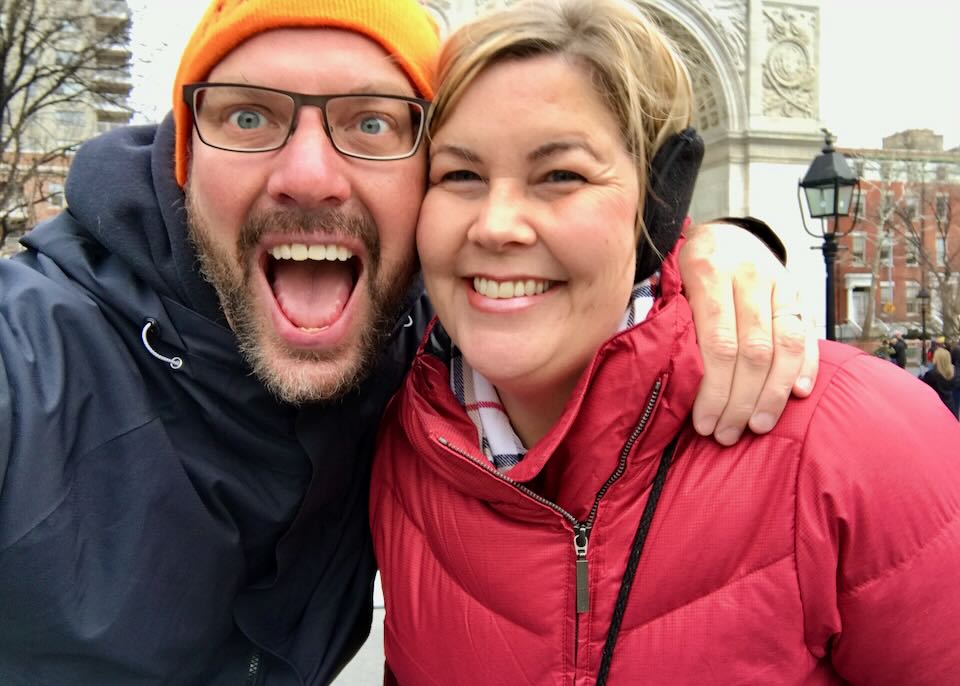
My wife and I in Washington Square Park in NYC.
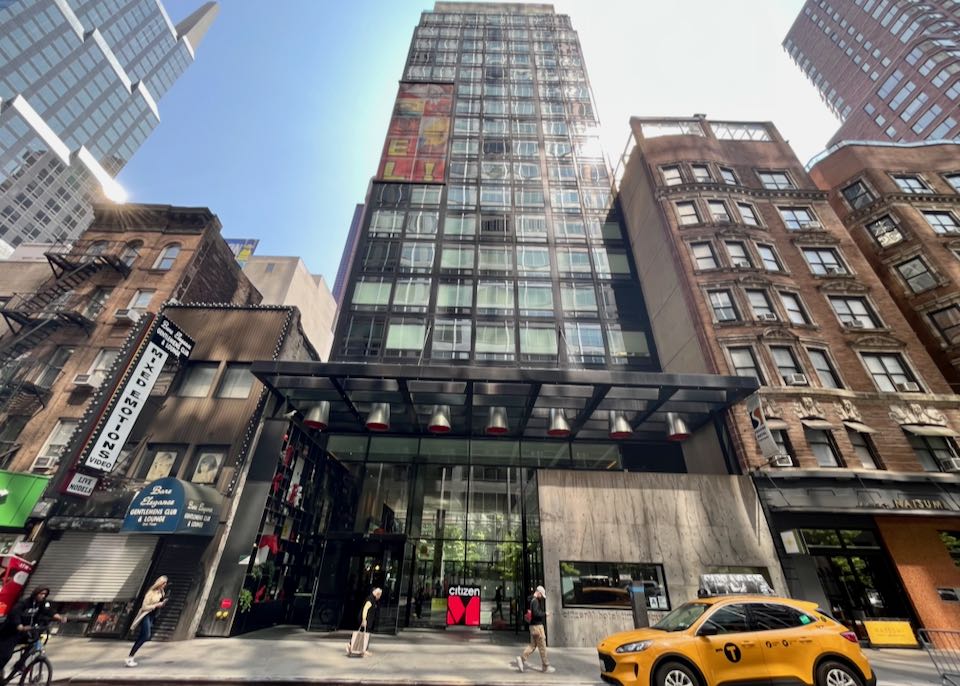
Trendy yet affordable citizenM hotel near Times Square. All rooms have the same layout with one king bed. Great for singles, or couples on a budget.
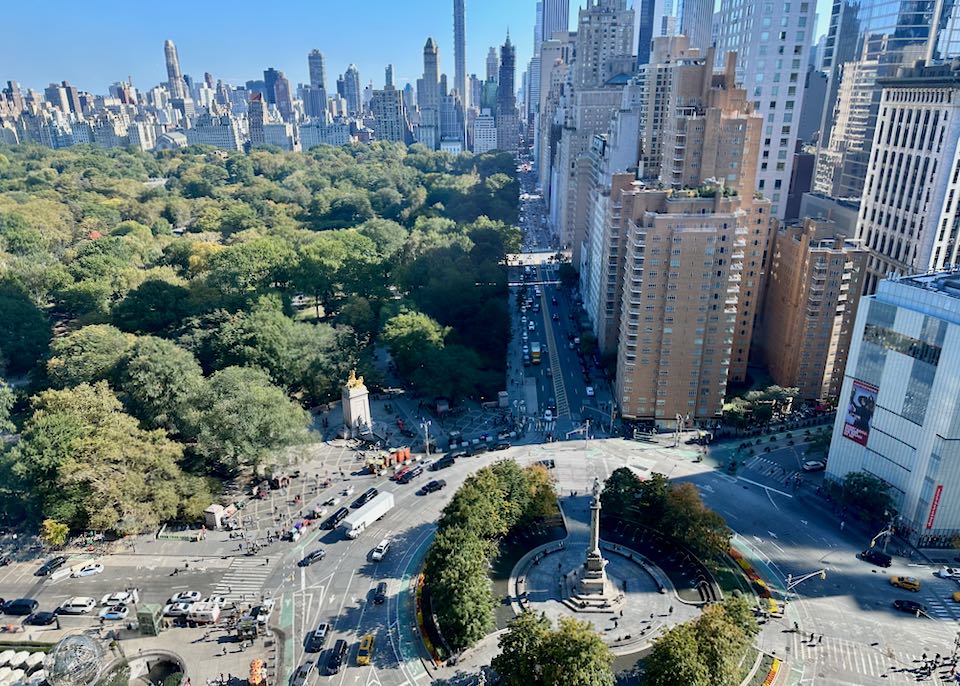
The view of Central Park and Columbus Circle from the Mandarin Oriental – my favorite hotel in New York City.
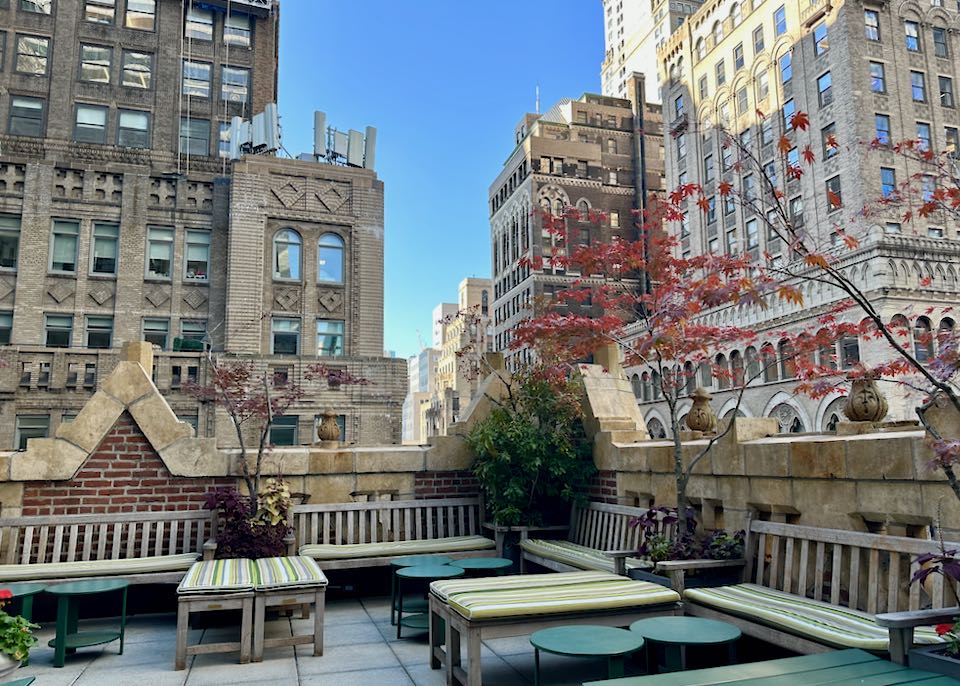
The Library Hotel is fantastic for couples looking for a reserved calm in the heart of Midtown. I stayed here on my most-recent visit.
Best Areas to Stay in New York City
For first-time visitors to New York City, I strongly recommend staying in or near Midtown Manhattan, specifically the area encompassing Times Square and the Theater District. While this area is undeniably crowded, its convenience and unbeatable access to the city’s highlights are crucial for a productive first trip.
My wife and I during a walk along the High Line in New York City.
Why Midtown is the Best Base:
• Location and Walkability: This area, roughly from 42nd to 50th Street, places you immediately in the center of the action. You are within easy walking distance of essential New York sights:
• Broadway: Countless theaters are right on your doorstep.
• Iconic Sights: The dazzling heart of Times Square, Rockefeller Center, Fifth Avenue shopping, Bryant Park, and the New York Public Library are all nearby.
• Museums: You are not far from destinations like MoMA (Museum of Modern Art) and the Museum of Broadway.
• Hotel Density: The area is saturated with hotels across all price points, ensuring a vast selection of rooms, often at competitive prices due to the sheer volume of inventory.
• Transit Hub: The 42nd Street/Times Square subway station is a massive, central hub serviced by numerous major subway lines (including the 1, 2, 3, N, Q, R, S, and 7 trains). This connection makes exploring other parts of the city—from Downtown to Central Park and Brooklyn—simple and fast.
• Dining: While the immediate dining scene is geared toward tourists, you will find an incredible amount of choice for quick, easy, family-friendly, and budget-conscious meals. You can easily walk to better dining areas, such as Hell’s Kitchen, for more authentic, high-quality culinary experiences.
Staying in Midtown allows you to immerse yourself in the energetic atmosphere many imagine when they picture New York. It maximizes your sightseeing time and minimizes complexity, which is exactly what a first-timer needs.
The Sheraton Times Square is not winning any awards for luxury. But it’s perfectly adequate and has a fantastic location in the Theater District with an easy walk to Central Park. There’s a subway station (visible in photo) directly beside the hotel.
Good hotels in Midtown, close to Times Square:
Marriott Marquis • Sheraton Times Square • AKA Times Square • Margaritaville Times Square • citizenM • Hilton Garden Inn Times Square Central • Riu Plaza Times Square • Pod Times Square • LUMA Hotel – Times Square • Edison Times Square • Westin at Times Square • Andaz 5th Avenue
NYC – The Layout
NYC is Made Up of Five Boroughs: Think of these like distinct counties or districts, each with its own vibe.
• Manhattan: This is the long, relatively narrow island that most first-time visitors think of as “New York City.” It’s where you’ll find a huge chunk of the iconic landmarks, theaters, museums, and that famous skyline. This guide will focus heavily on Manhattan.
• Brooklyn: Just across the East River from Manhattan (think Brooklyn Bridge). It’s huge, incredibly diverse, and home to trendy neighborhoods, great food, and often, amazing views back towards Manhattan.
• Queens: To the east of Manhattan and north of Brooklyn. It’s the most ethnically diverse urban area in the world and where you’ll find both major airports (JFK and LaGuardia). Long Island City in Queens is a popular spot for hotels with quick Manhattan access.
• The Bronx: The only borough primarily on the U.S. mainland, north of Manhattan. Home to Yankee Stadium and the Bronx Zoo.
• Staten Island: Accessible by a famous (and free!) ferry from Downtown Manhattan, offering great Statue of Liberty views. It’s the most suburban-feeling of the boroughs.Manhattan: For most visitors, Manhattan is where the action is. It’s surprisingly long and skinny, running roughly north to south.
• It’s an Island: Bounded by the Hudson River to the west (that’s New Jersey on the other side), the East River to the east (separating it from Brooklyn and Queens), and the Harlem River to the north (bordering The Bronx).
Key Manhattan Sections
• Downtown: Generally refers to everything south of 14th Street. This is the oldest part of the city and includes neighborhoods like the Financial District (Wall Street), Tribeca, SoHo, Greenwich Village, the East Village, and the Lower East Side. It’s less of a strict grid here, with more named streets and winding roads, especially at the very southern tip.
• Midtown: This is the bustling heart of Manhattan, roughly stretching from 14th Street up to 59th Street (the southern edge of Central Park). This is where you’ll find Times Square, the Theater District, Grand Central Terminal, the Empire State Building, Rockefeller Center, and many corporate headquarters. It’s characterized by the dense grid and towering skyscrapers.
• Uptown: Generally, the area north of 59th Street (Central Park). This includes the Upper West Side, Upper East Side, Harlem, and further north. Central Park itself is a massive green oasis separating the Upper East and Upper West Sides. Uptown is known for being more residential, with world-class museums (like the Met and Natural History) flanking Central Park.
• Central Park: The Lungs of the City: This massive, iconic park (843 acres!) sits right in the middle of Uptown Manhattan, running from 59th Street up to 110th Street. It’s a crucial landmark and a wonderful place to orient yourself. The areas bordering it are highly desirable places to stay.Understanding Manhattan’s Grid
• Above roughly Houston Street (pronounced HOW-stun, not HEW-stun like the city in Texas), Manhattan’s layout becomes a beautifully logical grid system. This makes navigation much easier than you might expect.
• Avenues Run North-South: These are the long roads. They generally run from 1st Avenue on the East Side way over to 12th Avenue on the West Side.
• Streets Run East-West: These are the shorter cross-streets. They are numbered, starting from 1st Street Downtown and going all the way up into the 200s in Upper Manhattan.
• Fifth Avenue is the Great Divider: This iconic avenue splits Manhattan into its East Side and West Side. So, you’ll have addresses like “East 57th Street” or “West 82nd Street.” Street numbers get higher as you move away from Fifth Avenue in either direction.
• Broadway – The Quirky Exception: Broadway is an old Native American trail and one of the city’s oldest thoroughfares. It cuts diagonally across the grid, creating some famous intersections like Times Square and Herald Square.
• “Blocks” as a Measure: New Yorkers often talk in blocks. Typically, 20 north-south blocks (e.g., from 42nd Street to 62nd Street) equal about one mile. East-west blocks (between avenues) are generally longer.Tip: “Uptown” and “Downtown” are also directions. Beyond being geographical areas, these terms also indicate direction, especially on the subway. If you’re heading north, you’re going “uptown.” Heading south, you’re going “downtown.” Simple!
The Best Places to Stay in NYC
The Beekman in Lower Manhattan.
- Best Luxury Hotels in NYC
The Beekman • Lowell Hotel • Mandarin Oriental • Pendry Manhattan West • The Peninsula • The Pierre • The Wallace • Wall Street Hotel- Best Hotels for Families
Lowell (luxury) • AKA Times Square (midrange)- Best Boutique/Honeymoon Hotels for Couples
Archer Hotel • Library Hotel • Crosby Street Hotel • Mint House at 70 Pine • Nine Orchard • Whitby Hotel- Best Midrange Hotels in NYC
Artezen Hotel • Best Western Plus Soho • citizenM Bowery • citizenM Times Square • Hotel Mimosa • The Jewel Hotel • Staypineapple Midtown- Best Cheap Hotels in NYC
La Quinta Times Square South • Pod 39- Best Hostels in NYC
American Dream • HI NYC • Kama Central Park • The Local NY
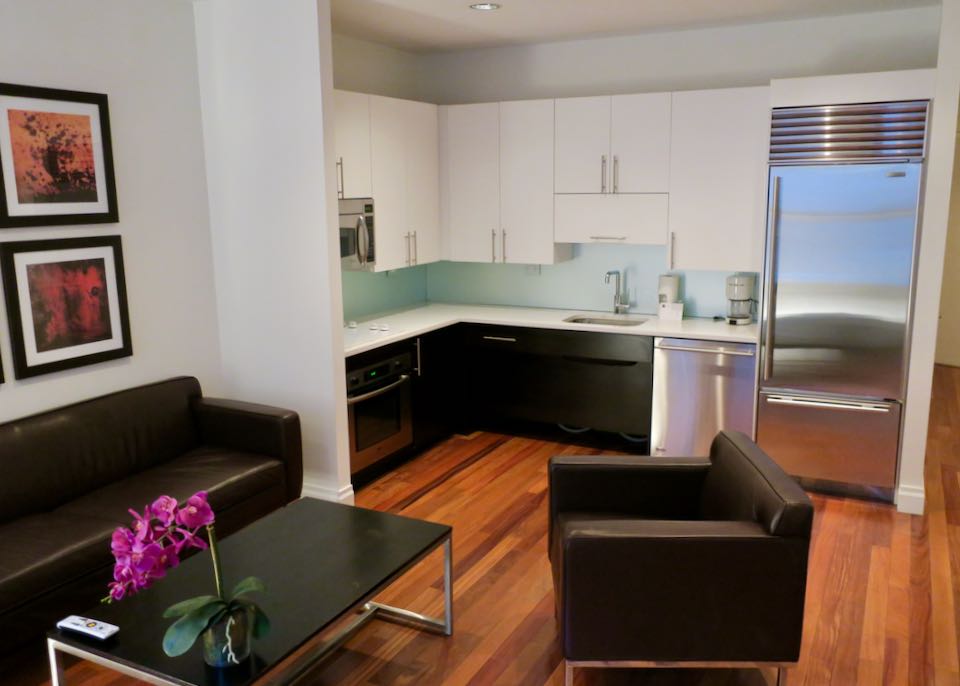
Our suite at the AKA Times Square in Midtown. One and two bedroom apartments available. Great for families.
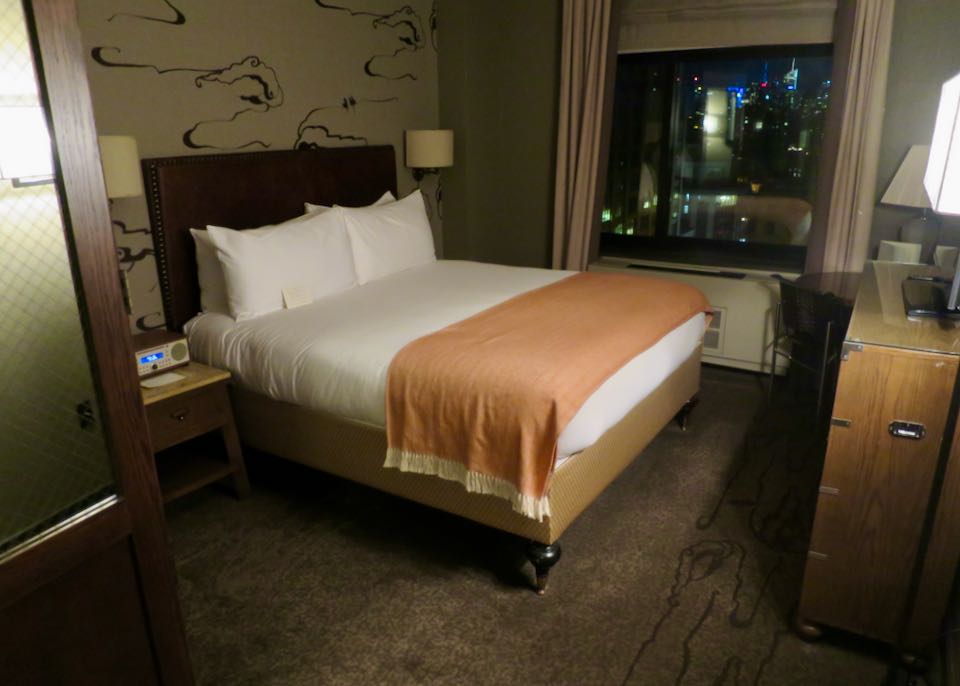
Our suite at the Soho Grand Hotel.
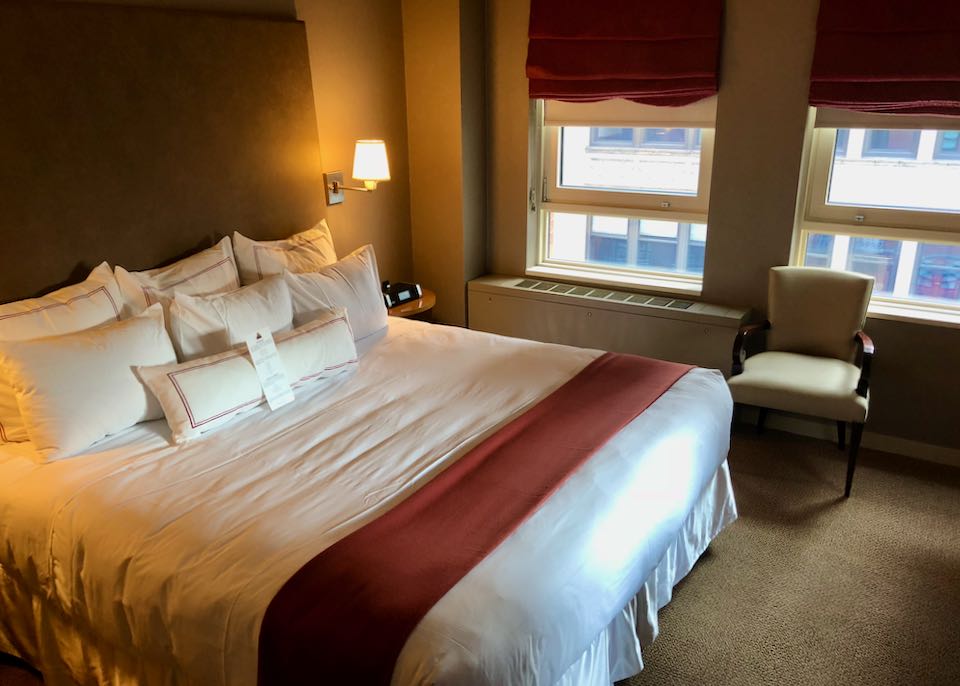
Our suite at the Giraffe Hotel near Washington Square Park.
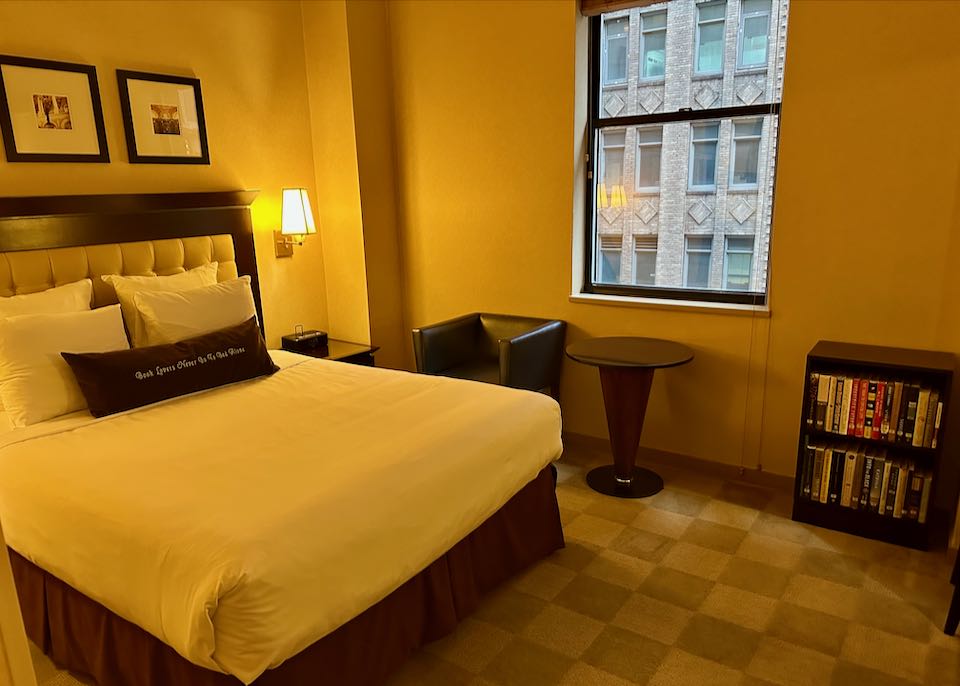
Our suite at the Library Hotel.
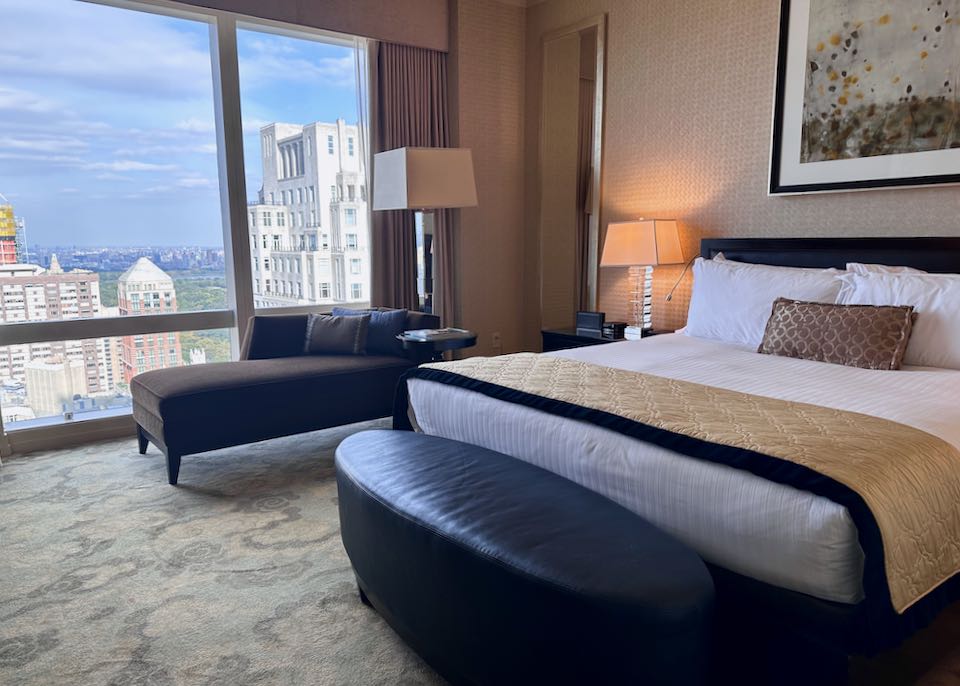
Our suite at the Mandarin Oriental.
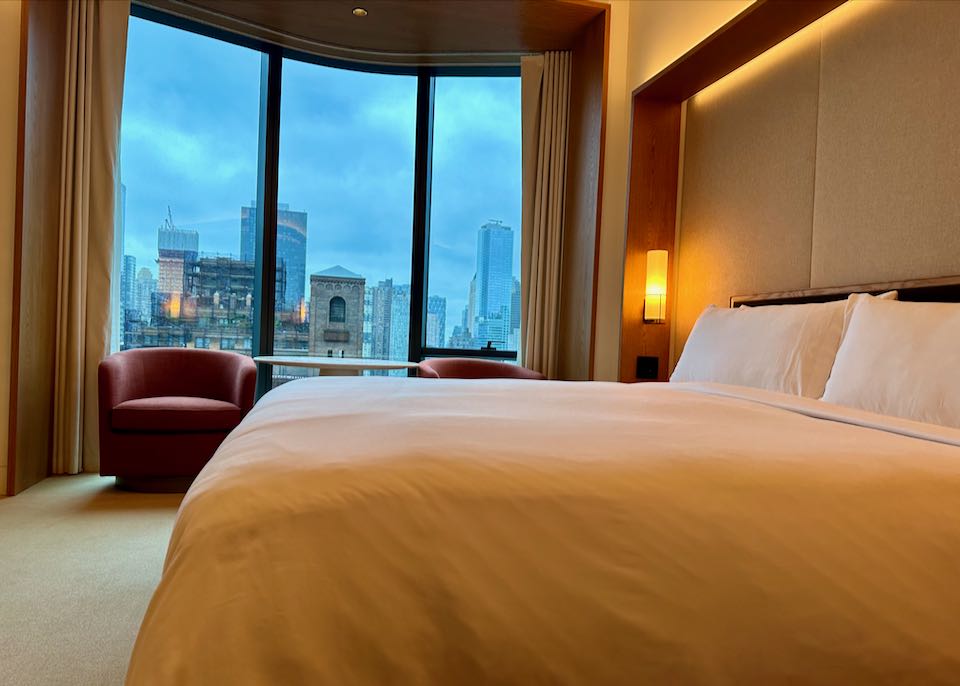
Our suite at the Pendry Manhattan West.
FAQ: Where to Stay in NYC
1. What is the best area to stay in NYC for first-time visitors?
• For most first-timers, Midtown Manhattan is my top recommendation, and for very good reasons.
• Midtown is central, putting you within walking distance or an easy subway ride of many iconic sights: Times Square, the southern end of Central Park, Rockefeller Center, St. Patrick’s Cathedral, Fifth Avenue shopping, Bryant Park, and the Broadway Theater District.
• The main advantage is unbeatable convenience for ticking off major landmarks on your list.
• You’ll find excellent transportation options, as numerous subway lines converge in Midtown, making it simple to get anywhere else in the city.
• It offers a vast range of hotel choices suitable for different budgets.
• You’re right in the thick of the classic “New York” experience, which is a big draw for many visiting for the first time.
• Keep in mind, however, that Midtown can be very crowded, feel quite touristy, and sometimes be more expensive for dining and hotels compared to other areas. The “local” neighborhood vibe can be harder to find here.
• Great alternatives for first-timers wanting a bit more character but still excellent convenience include the Upper West Side (more residential, borders Central Park, great for museums) or Greenwich Village (charming, historic, great food scene, lively yet less chaotic).The Margaritaville Times Square – has the only outdoor year-round (heated) pool near Times Square.
2. Where should I stay in NYC for sightseeing?
• Midtown Manhattan is hard to beat if your primary goal is efficient sightseeing.
• It boasts the highest concentration of NYC’s “must-see” attractions, meaning less travel time between sights and more time actually seeing them.
• For Broadway shows and the bright lights, the Times Square/Theater District within Midtown is ideal.
• If you’re interested in Grand Central Terminal, the Chrysler Building, and the UN, look at areas near Grand Central or Midtown East, which are slightly calmer than Times Square.
• For high-end shopping, Museum of Modern Art (MoMA), and strolls in Central Park, areas near Central Park South or Fifth Avenue are perfect.
• If your sightseeing list leans heavily towards Downtown attractions (Statue of Liberty/Ellis Island ferries, 9/11 Memorial & Museum, Wall Street, Brooklyn Bridge), consider staying in the Financial District or Tribeca for convenience to those, then taking the subway uptown for Midtown sights.
• A key takeaway is to pinpoint your top 5-10 “must-see” sights on a map; where they cluster will often guide you to the most convenient sightseeing base for your specific trip.3. What are the safest neighborhoods to stay in New York City?
• NYC is generally a very safe city for tourists, especially in the areas where you’re likely to be staying and sightseeing. Always practice standard city smarts, though.
• The Upper West Side is known for being family-friendly and residential with a strong neighborhood feel.
• The Upper East Side is similar to the Upper West – affluent, residential, home to Museum Mile, and feels very secure.
• Greenwich Village is lively but generally feels safe due to the number of people, students, and local activity.
• SoHo and Nolita are trendy, busy with shoppers and diners, and generally well-lit and populated.
• Midtown, especially the more corporate or heavily touristed parts, has a high police presence and constant foot traffic, which act as deterrents to crime.
• Battery Park City is planned, modern, and often cited as one of the safest due to its somewhat insulated feel.
• Remember that “safety” can be subjective, and even in the safest areas, petty crime like pickpocketing can occur in crowded places. Be aware of your belongings.
• At night, it’s always wise to stick to well-lit, busy streets, especially if you’re unfamiliar with an area.A Knicks, Liberty, or Rangers game at Madison Square Gardens is a highlight of a New York visit. The best hotels near MSG are the Renaissance and Hampton Inn Madison Square Garden.
4. What’s the most central location to stay in NYC?
• Hands down, Midtown Manhattan is the geographical and practical center for most tourists visiting New York City.
• It’s considered “central” because it’s where many iconic sights, theaters, and flagship stores are located.
• Midtown serves as a major transportation nexus; Grand Central Terminal and the Times Square/Port Authority subway complexes are massive hubs connecting you to virtually every part of the city.
• From Midtown, you can get Uptown or Downtown with similar ease and travel time.
• Specific areas within Midtown often highlighted for their centrality include Times Square (the epicenter of tourism), Herald Square (near Macy’s and Penn Station), and the area around Grand Central Terminal.
• Staying “central” means you’ll spend less time commuting to attractions compared to staying further uptown, downtown, or in an outer borough.5. Should I stay in Manhattan or Brooklyn (or Queens/Bronx/Staten Island)?
• For most first-time visitors or those with short trips focused on iconic sights, Manhattan is definitely the most convenient. Brooklyn, however, offers a fantastic, often more “local” experience.
• Manhattan Pros: Highest concentration of famous attractions and museums, most extensive hotel selection, very walkable, epicenter of classic “NYC” energy.
• Manhattan Cons: More expensive, can feel very touristy in certain areas, hotel rooms are smaller.
• Brooklyn Pros (e.g., Williamsburg, Dumbo, Brooklyn Heights): A more “local” neighborhood feel, fantastic food scene, great independent shops, better hotel value, amazing Manhattan skyline views. Good subway access to Manhattan from popular neighborhoods.
• Brooklyn Cons: You’ll be commuting into Manhattan for most major tourist sights (factor in 15-30+ minutes each way).
• Queens Pros (especially Long Island City): Great hotel deals with incredible Manhattan skyline views, often just one or two subway stops from Midtown Manhattan.
• Queens Cons: Less of a “destination” feel in itself compared to parts of Brooklyn or Manhattan.
• Bronx Pros: Can be the most budget-friendly, offer a very different, authentic NYC experience.
• Bronx Cons: Less convenient for typical tourist sightseeing due to longer commute times; fewer hotel options.
• Recommendation: First-timers/short stays go with Manhattan. Repeat visitors, foodies, or those seeking a local vibe might love Brooklyn. For budget-conscious travelers wanting quick Manhattan access, Long Island City in Queens is a strong choice.6. What are the pros and cons of staying in Times Square?
• Times Square is iconic and central, but it’s a high-energy environment that isn’t for everyone.
• Pros: Unbeatable access to Broadway theaters. Hyper-central for many Midtown sights and a major subway hub. The “wow” factor of the lights and energy is undeniable. Lots of tourist-focused amenities and familiar chain restaurants/stores. Generally feels safe due to crowds and police presence.
• Cons: Extremely crowded and can be overwhelming. Very touristy, lacking a local neighborhood feel. Can be noisy, even with good hotel soundproofing. More expensive for hotels and dining. The constant sensory stimulation isn’t relaxing for all.
• Good For: First-timers who want to be in the absolute heart of the spectacle, major theater buffs, those who love constant energy.
• Might Dislike It: Those seeking a quiet retreat, a local vibe, unique dining, or those easily overwhelmed by crowds.The Upper West Side’s Museum of Natural History.
7. What is it like to stay in Greenwich Village / SoHo / Upper West Side / Midtown East?
• These neighborhoods each offer a very distinct New York City experience.
• Greenwich Village (“The Village”): Historic, charming, bohemian, and lively with beautiful brownstones and Washington Square Park at its heart. Fantastic for walking, great independent shops, amazing food scene, vibrant nightlife (jazz, comedy). Feels more “neighborhoody.” Hotels can be pricey boutique style. Great for couples, solo travelers, foodies.
• SoHo (South of Houston Street): Trendy, chic, fashionable, with famous cast-iron architecture. World-class shopping, stylish cafes, art galleries. Can be very expensive and crowded with shoppers. Great for fashion lovers and those seeking an upscale, trendy atmosphere.
• Upper West Side: Residential, family-friendly, relaxed but cultured, bordering Central Park West and Riverside Park. Quieter, excellent for families, home to the American Museum of Natural History and Lincoln Center. Feels like a real NYC neighborhood with good local restaurants.
• Midtown East: More corporate and slightly more sedate than Times Square/Midtown West, but still very central. Elegant architecture, home to Grand Central, Chrysler Building. Excellent transportation, good for business travelers, slightly calmer Midtown base. Can feel sleepy at night/weekends compared to other areas.8. Where can I find boutique hotels in NYC?
• Boutique hotels, offering unique style and personalized service, thrive in NYC’s characterful neighborhoods. Great for travelers seeking personality and a strong sense of place.
• Greenwich Village & West Village: Perfect for charming, historic boutique stays (e.g., The Marlton).
• SoHo & Nolita: Many trendy, design-forward options reflecting the area’s chic vibe (e.g., The Mercer, Crosby Street Hotel).
• Lower East Side: Increasingly home to cool, edgy boutique hotels (e.g., The Ludlow, Nine Orchard).
• Tribeca: Upscale and often artsy boutique hotels, some in converted warehouses (e.g., The Greenwich Hotel).
• Chelsea & Meatpacking District: Stylish and modern options, near art galleries and the High Line (e.g., Pendry Manhattan West).
• Williamsburg (Brooklyn): A hub for hip, independently-minded boutique hotels (e.g., The Wythe Hotel, The Hoxton Williamsburg).9. Which NYC neighborhoods are best for nightlife?
• NYC’s nightlife is legendary and caters to all tastes. Your best bet depends on the vibe you’re after.
• Greenwich Village: Historic bars, legendary jazz clubs (Blue Note, Village Vanguard), Off-Broadway theaters, cozy pubs, and a notable LGBTQ+ scene.
• Lower East Side: Trendy bars, live music venues (rock, indie), speakeasies, and a grittier (though gentrifying) vibe.
• East Village: Dive bars, alternative music venues, an eclectic and youthful energy, and many casual spots.
• Meatpacking District: Upscale clubs, trendy rooftop bars, and a chic “see and be seen” crowd (can be expensive).
• Williamsburg (Brooklyn): Major nightlife hub outside Manhattan, with hipster bars, craft cocktail spots, live music, and rooftop bars with Manhattan views.
• Bushwick (Brooklyn): A more underground scene with warehouse parties, edgier clubs, and art spaces.
• Times Square/Theater District: Primarily for Broadway shows and tourist-focused bars; not where locals typically go for a “night out.”The start of the High Line, steps from one of my favorite hotels, the Pendry Manhattan West.
10. Where to stay in NYC for a local experience?
• To feel more like a New Yorker, venture beyond the main tourist hubs. The key is to choose an area with fewer chain stores and more independent businesses. Observe daily life and visit local markets.
• Brooklyn Neighborhoods (Williamsburg, Park Slope, Carroll Gardens, Fort Greene): Fantastic local shops, cafes, restaurants, and a more laid-back community vibe. Williamsburg is trendier; Park Slope is more family-oriented.
• Upper West Side: Retains a strong residential feel with local institutions like Zabar’s, and residents enjoying Central Park or Riverside Park.
• Greenwich Village / West Village: Despite tourist popularity, these areas maintain a strong neighborhood character with many long-term residents and local spots.
• Harlem: Rich in history and culture, offering an authentic NYC experience with fantastic soul food, jazz clubs, and beautiful architecture.My family and I in New York City.
11. What are the best neighborhoods in NYC for families with kids?
• Look for safety, proximity to parks, kid-friendly attractions, and family-oriented amenities.
• Upper West Side: Best overall for families. Borders Central Park (playgrounds, zoo), near the American Museum of Natural History and Children’s Museum of Manhattan. Generally quieter, residential, with family-friendly restaurants. Hotel Ideas: Hotel Beacon (known for its apartment-style suites with kitchenettes, great for families needing more space), or Arthouse Hotel (stylish, often has family packages, and close to Central Park).
• Upper East Side: Also excellent. Borders Central Park (different playgrounds, closer to Central Park Zoo), near Museum Mile. Feels very safe, has a family vibe. Family Hotel Ideas: Loews Regency (offers family-friendly amenities and services, good location), or The Gardens Sonesta ES Suites (features suites with kitchens, which is a huge plus for families).
• Battery Park City: Lots of green space and playgrounds along the Hudson River. Feels planned and safe, quieter, close to the Statue of Liberty ferry. Can feel a bit isolated. Family Hotel Ideas: Conrad New York Downtown (an all-suite hotel offering more space for families, very modern and close to the parks), or Millennium Downtown (good location for accessing ferries and the 9/11 Memorial, often has family-sized room options).
• Tribeca (Manhattan): Can be pricey but is also very family-friendly, with good parks and a safe, relatively quiet feel on weekends. Family Hotel Ideas: Four Seasons Downtown (luxury option with top-notch service and kid-friendly amenities), or Hilton Garden Inn Tribeca (reliable choice, good room sizes for families).
• Midtown (with caveats): While not as “neighborhoody,” some Midtown hotels are very family-focused and offer amenities like pools. Proximity to Times Square attractions is a plus. Family Hotel Ideas: New York Marriott Marquis (right in Times Square, often has family packages and good-sized rooms), or The Peninsula (luxury option with an indoor pool, great for a family splurge and a bit removed from the direct chaos of Times Square but still central). Embassy Suites by Hilton Times Square offers more space with its suite layouts.
• Park Slope (Brooklyn): A quintessential family neighborhood with beautiful brownstone-lined streets, bordering Prospect Park. Strong community feel, lots of kid-focused shops. Requires a subway ride to Manhattan sights. Family Hotel Ideas: Hotel options are more limited here compared to Manhattan, but look for well-regarded spots like Hotel Le Bleu (modern, great location) or consider apartment rentals for a more local feel. Holiday Inn Express Brooklyn – Sunset Park (a bit further out but budget-friendly for families willing to use subways/buses from that area).12. How much does it typically cost to stay in a hotel in NYC per night? (As of May 2025)
• NYC hotel prices are dynamic. Season, day of the week, location, and hotel class heavily influence costs. Here are general ranges for a standard room:
• Budget-Friendly (Hostels, outer borough hotels): $100 – $200+
• Mid-Range Manhattan (Midtown/Times Square): $250 – $600+ (can be much higher at peak)
• Mid-Range Manhattan (Other good areas): $200 – $500+
• Mid-Range Brooklyn (Popular areas): $175 – $400+
• Mid-Range Queens (Long Island City): $150 – $300+
• Luxury (High-end, 4.5-5 star hotels): $600 – $1500+ (and much higher for top suites)
• Prices spike during peak seasons (Spring, Fall, Holidays), major events, and on weekends.
• Always factor in hotel taxes (around 14.75%) and potential resort/facility fees on top of the quoted room rate.13. What are some of the best luxury hotels in New York City?
• NYC boasts an array of opulent and iconic luxury hotels known for impeccable service and prestige.
• Expect exquisite dining, world-class spas, personalized service, prime locations, and very high price tags at these establishments.
• Classic Grand Dames: The St. Regis (Midtown East), The Peninsula (Fifth Avenue), Ritz-Carlton Central Park (Central Park South), The Pierre (Upper East Side).
• Modern & Chic Luxury: Mandarin Oriental (Columbus Circle), Four Seasons Downtown (Financial District), The Carlyle (Upper East Side), Baccarat Hotel (Midtown West), Pendry Manhattan West (Hudson Yards Area), Wall Street Hotel (Financial District), Mint House at 70 Pine (Financial District).
• Boutique Luxury: Lowell Hotel (Upper East Side), Barrière Fouquet’s New York (Tribeca), The Beekman (Financial District), The Wallace (Upper West Side), Archer Hotel (Garment District/Bryant Park area), Library Hotel (Midtown East), Whitby Hotel (Midtown West).The historic White Horse Tavern in Greenwich Village.
14. Are hotels cheaper outside of Manhattan?
• Generally, yes. Hotels in Brooklyn, Queens, The Bronx, and across the river in New Jersey tend to be more affordable than comparable hotels in most parts of Manhattan.
• Long Island City, Queens: A prime example, offering modern rooms with quick subway access to Midtown for significantly less.
• Brooklyn: While trendy areas like Williamsburg can be pricey, moving further out can yield savings.
• Bronx & Staten Island: Typically offer the lowest hotel prices within NYC but have the longest commutes to Manhattan’s main attractions.
• New Jersey (Jersey City, Hoboken): Some hotels with stunning Manhattan skyline views at lower prices, accessible by PATH train or ferry (factor in this extra step/cost).
• The main trade-off is commute time and convenience versus cost.15. How far in advance should I book my accommodation in NYC?
• Generally, booking further in advance is better for NYC, especially for specific preferences or peak travel times.
• For peak seasons (Spring, Fall, Holidays), 3-6 months in advance is advisable, even earlier for highly-rated or specific room types.
• If your trip coincides with major events (NYC Marathon, UN Week), book as early as possible (6-12 months).
• During shoulder seasons, 1-3 months out might be sufficient, but popular spots still fill.
• In the off-season (January – early March), you might find more last-minute availability, but booking 1-2 months out can still yield good rates.
• While some general travel advice suggests last-minute deals, for a high-demand city like NYC, this is risky and can lead to limited choice or high prices. Lean towards booking earlier, using flexible rates if possible.16. Is it better to stay near a subway station in NYC?
• YES, absolutely! This is one of my most essential pieces of advice for choosing your NYC hotel.
• The subway is your lifeline for efficiently navigating the city. Taxis are expensive and often hit traffic.
• Being near a subway saves time and energy.
• Proximity to a station served by multiple subway lines is even better, offering more direct routes.
• “Near” ideally means within a 5-7 minute walk.
• Always check a hotel’s exact proximity to subway entrances and which lines serve that station.17. Are there resort fees or hidden hotel taxes in NYC I should be aware of?
• Yes, unfortunately. Be mindful of these when budgeting.
• Many NYC hotels (especially in tourist areas, 3-star and above) charge a mandatory daily “Resort Fee,” “Facility Fee,” or “Destination Fee” of $25 to $50+ per night.
• Fees supposedly cover amenities like Wi-Fi or gym access, but are usually compulsory whether you use them or not.
• Fees are often NOT included in the initial price on booking sites and may only appear in the fine print or at final confirmation/check-in.
• NYC hotel taxes are also high, around 14.75% on top of your room rate and any resort fee.18. Where to stay in NYC for Broadway shows?
• The Theater District, in the heart of Midtown Manhattan, is the undisputed champion for Broadway convenience.
• Most Broadway theaters are located between 41st and 54th Streets, and 6th and 8th Avenues. Staying here means you can easily walk to shows in minutes.
• The area is packed with restaurants offering pre-theater dinner menus.
• Times Square is the absolute epicenter within the Theater District.
• Hell’s Kitchen (just west) offers great restaurants and has a more “local” feel while still being a very short walk.
• If seeing multiple Broadway shows is a top priority, staying directly in or very near the Theater District is your best bet.The 5-star Equinox Hotel, located across from the Edge (outdoor viewing deck), Hudson Yards (a high end indoor mall), and a subway station.
19. What are the best areas for shopping in NYC, and where to stay nearby?
• NYC is a shopper’s paradise, with areas catering to every style and budget.
• Luxury & Designer: Fifth Avenue (Midtown, 49th-60th St) and Madison Avenue (Upper East Side) are home to iconic department stores and high-end designer boutiques. Stay in upscale Midtown East, Central Park South, or Upper East Side hotels.
• Trendy & Contemporary: SoHo is famous for its mix of international brands, mainstream stores, and designer boutiques amid cast-iron architecture. Nolita offers charming streets with curated independent boutiques. Stay in stylish hotels in SoHo, Nolita, Lower East Side, or Greenwich Village.
• Department Stores: Macy’s Herald Square (Midtown West) and Bloomingdale’s (Midtown East) are iconic. Hotels throughout Midtown are convenient.
• Unique & Independent: Greenwich Village/West Village (eclectic clothing, bookstores), East Village (vintage, quirky), and Williamsburg, Brooklyn (vintage, local designers, artisan crafts) are excellent. Look for boutique hotels in these neighborhoods.
• For a shopping-focused trip, staying in or near SoHo/Nolita or Midtown (depending on your preferred style) is recommended.20. Where should I stay in NYC if I’m a solo traveler?
• Greenwich Village / East Village: Lively atmosphere with many cafes, bars, and casual restaurants perfect for dining alone. Feels safe with good energy.
• Upper West Side: Feels very safe and residential, great for walks in Central Park. Lots of local cafes. Good subway access.
• Midtown: Easy to get around for sightseeing, but can feel a bit anonymous compared to more neighborhoody areas.
• Williamsburg (Brooklyn): Trendy, with cool cafes and bars; good for younger solo travelers seeking a vibrant scene.
• Consider hotels with common areas or organized activities if you’re looking to socialize.
• Hostels (various locations like Upper West Side, Chelsea, LIC): Excellent for meeting other travelers and for budget-conscious solos. Choose reputable ones.21. What are some romantic areas to stay in NYC for couples or honeymooners?
• NYC is an incredibly romantic city, perfect for a couple’s getaway or honeymoon. The key is to find an area with charm, beautiful scenery, fantastic dining, and hotels that offer that extra special touch.
• Greenwich Village / West Village: This is classic New York romance. Think cobblestone streets, historic brownstones, incredibly cozy restaurants (some with fireplaces), and the lovely Washington Square Park. It’s perfect for just wandering. Hotel Ideas: The Marlton Hotel (bohemian-chic, historic building near Washington Square Park), Walker Hotel (Art Deco charm, great location), or consider the unique, historic Incentra Village Hotel for a B&B feel.
• SoHo / Nolita: If your idea of romance includes a stylish and chic atmosphere, SoHo and Nolita deliver. You’ll find beautiful cast-iron architecture, upscale dining perfect for date nights, and trendy bars. The area is home to many design-forward boutique hotels. Hotel Ideas: Crosby Street Hotel (vibrant Firmdale design, private courtyard), The Mercer (loft-style luxury, very chic), NOMO SOHO (noted for its romantic decor and great location), or NobleDen Hotel (modern, some rooms with balconies).
• Upper West Side (near Central Park): For romantic walks in Central Park (think carriage rides or a rowboat on The Lake), elegant pre-war buildings, and cozy neighborhood restaurants. Hotels overlooking the park can be particularly special for a romantic escape. Hotel Ideas: While more residential, look for charming stays like Arthouse Hotel (stylish, near the park) or consider upscale options with park views slightly further south like JW Marriott Essex House (classic, on Central Park South).
• Upper East Side (near Central Park/Madison Ave): This area offers direct Central Park access combined with the elegance of Museum Mile and the high-end boutiques along Madison Avenue. You’ll find luxurious and discreet hotels here, perfect for a special occasion. Hotel Ideas: The Lowell (known for its residential feel, many rooms with wood-burning fireplaces – incredibly romantic!), The Carlyle (timeless sophistication, Bemelmans Bar), or The Pierre (iconic luxury overlooking the park).
• Tribeca: This neighborhood offers a more low-key and sophisticated vibe with its cobblestone streets, excellent upscale restaurants, and a sense of privacy. It’s home to some very chic boutique hotels perfect for couples. Hotel Ideas: The Greenwich Hotel (Robert De Niro’s luxurious, rustic-chic hotel with a stunning spa and pool), Barrière Fouquet’s (Parisian elegance and charm), or Walker Hotel Tribeca (stylish, contemporary design).
• Brooklyn Heights / Dumbo (Brooklyn): For absolutely unbeatable, iconic views of the Manhattan skyline and the Brooklyn Bridge, especially at sunset, these Brooklyn neighborhoods are hard to top. You get charming, historic streets in Brooklyn Heights and romantic walks along the waterfront in Dumbo. Hotel Ideas: 1 Hotel Brooklyn Bridge (stunning direct views, eco-luxe design, rooftop pool and bar), or explore boutique options in nearby Williamsburg like The William Vale or Arlo Williamsburg which also offer fantastic skyline views from rooms and rooftop.Streetside produce stalls in Chinatown.
22. What neighborhoods offer the best food scenes in NYC?
• NYC is a global food capital! Amazing food is everywhere, but these neighborhoods are legendary culinary destinations.
• Greenwich Village & West Village: Incredible concentration of diverse, high-quality restaurants from iconic pizzerias to Michelin-starred dining.
• East Village: Eclectic mix – fantastic Japanese (ramen, izakayas), Ukrainian, Indian, cheap eats, trendy spots.
• Lower East Side: Historic delis (Katz’s), modern cuisine, trendy brunch spots, great bagels.
• Chinatown (Manhattan): Authentic regional Chinese cuisine, amazing dim sum, bustling food stalls, often great value.
• Williamsburg (Brooklyn): A major foodie hotspot with farm-to-table, artisanal producers, famous pizza, trendy cafes. Smorgasburg (seasonal food market) is a must.
• Flushing (Queens): Arguably the best and most authentic Asian food scene (especially Chinese and Korean).
• Jackson Heights (Queens): Incredible South Asian, Tibetan, and Latin American food.
• Hell’s Kitchen (Manhattan): Very diverse ethnic cuisines catering to locals and pre-theater crowds.
• Don’t just stick to Manhattan! Exploring the food scenes in Brooklyn and Queens is a delicious adventure.The 10 Best Neighborhoods in NYC for Tourists
1. Midtown
Times Square, the bright lights of the Broadway Theater District, Fifth Avenue shopping, the landmark architecture of Rockefeller Center, the Empire State Building, St. Patrick’s Cathedral, the iconic Chrysler Building, New York Public Library’s main branch, the Museum of Modern Art, the United Nations complex, and dining choices from budget to haute cuisine are all found in this area, the very heart of Manhattan.
In terms of lofty observation decks, the stalwart Empire State and Top of the Rock (Rockefeller Center) have newer competition in the form of SUMMIT One Vanderbilt and the Edge, a jaw-dropping open-air platform over in Hudson Yards, one of the city’s newest cluster of skyscrapers. The huge copper-colored “Vessel” installation by Thomas Heatherwick is also here, and the development forms the northern end of the High Line (an elevated train line converted into a park). There’s also the brand-new Museum of Broadway, spy-themed Spyscape, and more traditional attractions such as Madame Tussauds New York and the Intrepid Sea, Air & Space Museum, a decommissioned aircraft carrier over on the Hudson River which contains the retired space shuttle Enterprise.
Midtown is a must for visitors and has the city’s largest concentration of hotels.
Note that the iconic Waldorf-Astoria New York is reopening on September 1, 2025 after a major renovation.
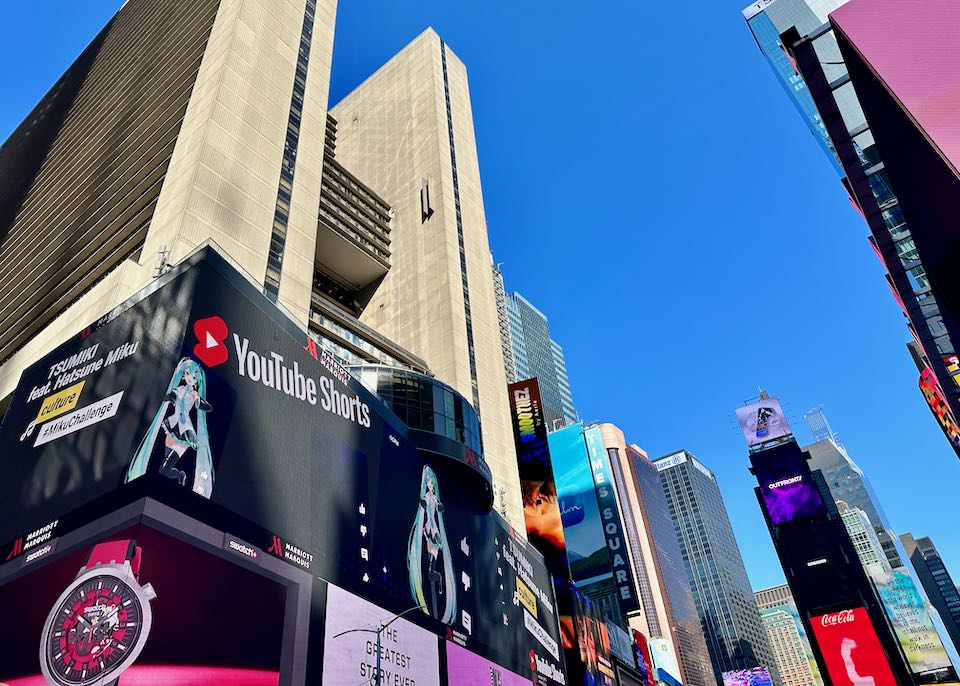
The Marriott Marquis in Times Square is as central as you can get.
- Best Hotels in Midtown Manhattan
Archer Hotel • Hotel phone: +1 (212) 719 4100
Andaz 5th Avenue • Hotel phone: +1 (212) 601-1234
Baccarat Hotel • Hotel phone: +1 (212) 790-8800
Casablanca Hotel • Hotel phone: +1 (212) 869-1212
Equinox Hotel Hudson Yards • Hotel phone: +1 (212) 812-9200
The Kimberly Hotel • Hotel phone: +1 (212) 755-0400
The Langham Fifth Avenue • Hotel phone: +1 (212) 695-4005
Library Hotel • Hotel phone: +1 (212) 983-4500
LUMA Times Square • Hotel phone: +1 (212) 730-0099
Pendry Manhattan West • Hotel phone: +1 (212) 933-7000
The Peninsula • Hotel phone: +1 (212) 956-2888
Renaissance Midtown • Hotel phone: +1 (212) 239-0014
Ritz-Carlton Central Park • Hotel phone: +1 (212) 308-9100
Whitby Hotel • Hotel phone: +1 (212) 586-5656- Best Midrange Hotels
AKA Times Square Apartments • Hotel phone: +1 (212) 764-5700
Arlo Midtown • Hotel phone: +1 (212) 343-7000
citizenM Times Square • Hotel phone: +1 (212) 461-3638
The Draper • Hotel phone: +1 (212) 645-0080
Edison Times Square • Hotel phone: +1 (212) 840-5000
EVEN Times Square South • Hotel phone: +1 (212) 356-0034
Hilton Garden Inn Times Square Central • Hotel phone: +1 (212) 840-9600
The Jewel Hotel • Hotel phone: +1 (212) 863-0550
Margaritaville Times Square • Hotel phone: +1 (212) 221-3007
Marriott Marquis • Hotel phone: +1 (212) 398-1900
Riu Plaza Times Square • Hotel phone: +1 (646) 864-1100
Staypineapple • Hotel phone: +1 (866) 866-7977
Westin at Times Square • Hotel phone: +1 (212) 201-2700- Best Cheap Hotels
Hotel 57 • Hotel phone: +1 (212) 753-8841
La Quinta Times Square South • Hotel phone: +1 (718) 690-3294
Pod 39 • Hotel phone: +1 (212) 865-5700
Pod Times Square • Hotel phone: +1 (844) 763-7666
Sheraton Times Square • Hotel phone: +1 (212) 581-1000- Best Hostel
American Dream • Hotel phone: +1 (212) 260-97792. Upper West Side & Central Park
From the luxury buildings skirting Central Park West to side streets lined with classic New York brownstones, this is a prime Manhattan residential area and home to some major attractions. Lincoln Center, the city’s cultural hub (the Met Opera, New York Philharmonic, and the New York City Ballet are all based here), and the American Museum of Natural History (known for its dinosaurs, butterfly conservatory, and Rose Center for Earth and Space) are both up here, as well as the enlightening New-York Historical Society. Further north, Morningside Heights encompasses the central campus of Ivy League-affiliated Columbia University, the massive Cathedral Church of Saint John the Divine, and General Grant National Memorial, better known as Grant’s Tomb (resting place of Union general and 18th president of the United States).
Like its East Side counterpart, the Upper West Side is flanked by parks, Central Park to the east and beautiful Riverside Park west along the Hudson River. Central Park itself is a vast, green space full of monuments, lakes, and attractions; all well worth exploring. Highlights include the Central Park Zoo, Strawberry Fields (a tribute to John Lennon, who was shot nearby), the Wollman Rink, the iconic Bethesda Terrace and Fountain, and the cast-iron-and-wood Bow Bridge over The Lake. The free Shakespeare in the Park summer performances take place at the Delacorte Theater while Conservatory Water pond is framed by popular statues to Alice in Wonderland and Hans Christian Andersen.
A quieter hotel scene and access to Central Park make the Upper West Side a good area for those who prefer a calmer neighborhood.
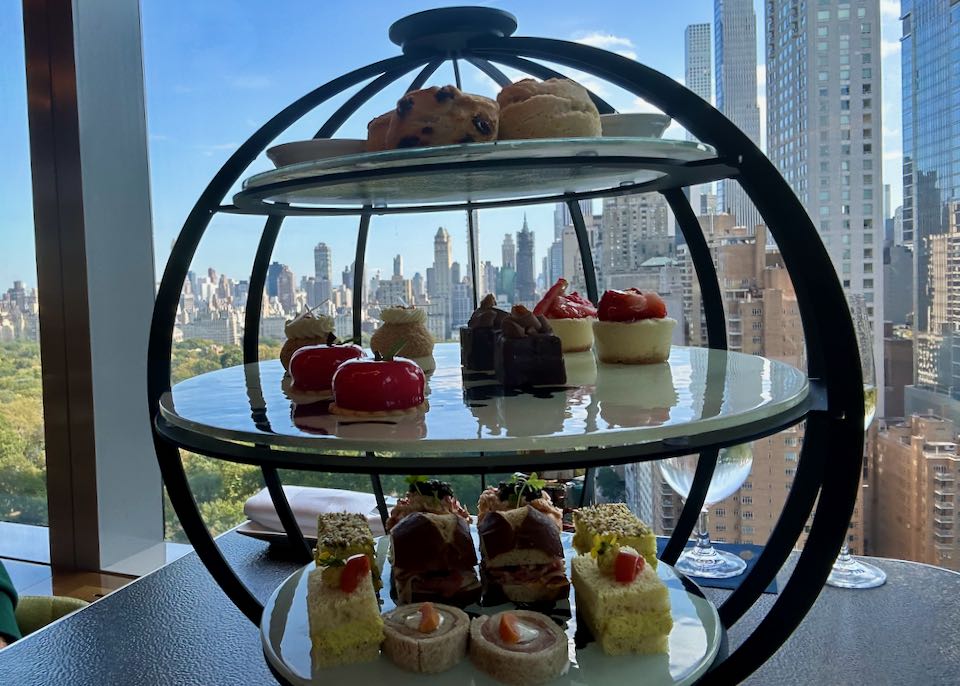
Afternoon tea at MO Lounge in the Mandarin Oriental is an absolute delight.
- Best Hotels on Upper West Side
Hotel Beacon • Hotel phone: +1 (212) 787-1100
Mandarin Oriental • Hotel phone: +1 (212) 805-8800
The Wallace • Hotel phone: +1 (212) 362-1006- Best Cheap/Midrange Hotels
Fairfield Inn & Suites Manhattan/Central Park • Hotel phone: +1 (212) 757-8550
Lucerne Hotel • Hotel phone: +1 (212) 875-1000- Best Hostels
HI NYC • Hotel phone: +1 (212) 932-2300
Kama Central Park • Hotel phone: +1 (646) 438-9222
International Student Center • Hotel phone: +1 (212) 787-77063. Upper East Side
Some of the city’s wealthiest residences are found in this tranquil area roughly between 59th and 96th streets, east of Fifth Avenue and Central Park. It is home to “Museum Mile,” comprising several excellent art institutions along Fifth Avenue, including the world-famous Metropolitan Museum of Art, the Frick Collection (in its recently renovated historic building), and the iconic Guggenheim Museum designed by Frank Lloyd Wright. Other highlights include the Neue Galerie, dedicated to early 20th-century art from Austria and Germany (which owns the “Woman in Gold”, aka Gustav Klimt’s Portrait of Adele Bloch-Bauer), the absorbing Cooper Hewitt Smithsonian Design Museum, and the huge Jewish Museum, containing the largest collection of Judaica outside Israel. The neighborhood is bordered by two green oases, Central Park to the west and Carl Schurz Park to the east, which features a promenade along the East River and Gracie Mansion, the official residence of the mayor of New York City since 1942.
Restaurants abound on the Upper East Side, from neighborhood diners to fine dining, but hotels are on the expensive side.
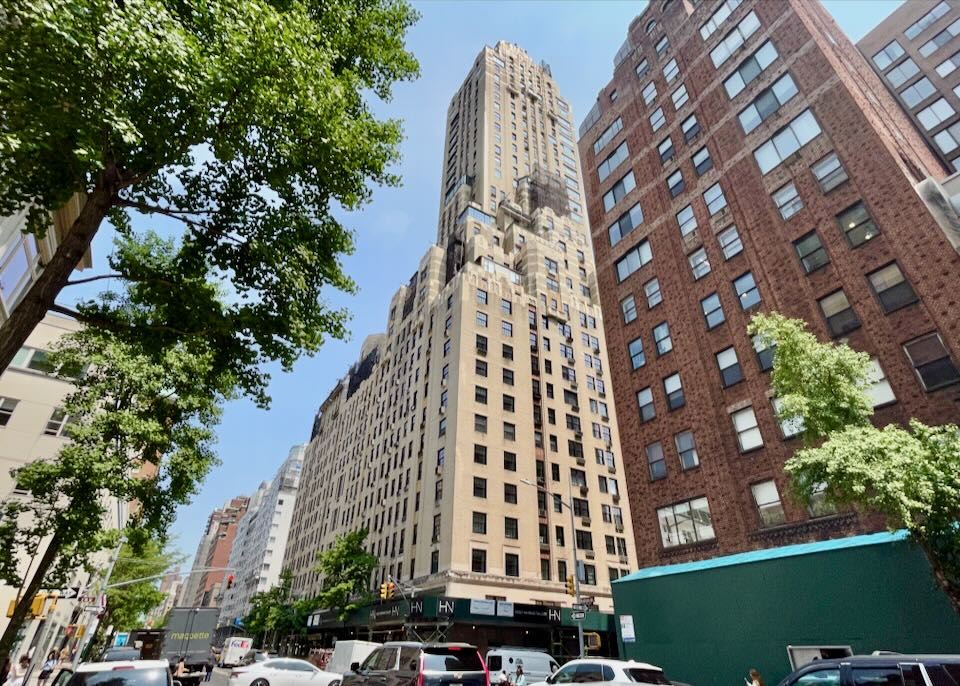
The Carlyle Hotel on New York’s Upper East Side.
- Best Hotels on Upper East Side
Lowell Hotel • Hotel phone: +1 (212) 838-1400
The Mark • Hotel phone: +1 (212) 744-4300
The Pierre • Hotel phone: +1 (212) 838-8000
The Sherry-Netherland • Hotel phone: +1 (212) 355-2800
The Carlyle • Hotel phone: +1 (212) 744-16004. Tribeca & SoHo
Named for their geography (“Triangle Below Canal”, and “South of Houston”), these former warehouse neighborhoods have seen a rebirth in recent years. Thanks largely to resident Robert DeNiro, Tribeca is home to the noted film festival of the same name, and its spacious, pricey loft apartments and fine dining attract the rich and famous. Soho’s loft spaces first drew artists and galleries, but rising rents have changed the area into a trendy shopping and dining district. Most people come here to shop, drink or eat, but there are a few attractions to check out, as well.
Tribeca’s tallest skyscraper, 56 Leonard, is quite a sight, nicknamed the “Jenga Building” thanks to its cantilevered glass box structure. Just across Canal Street is the recently opened Jackie Robinson Museum, commemorating the famous African American baseball player. A bit further north is the New York City Fire Museum, dedicated to the New York Fire Department since its creation in the 19th century, while the nearby Color Factory is one of the city’s burgeoning “Instagram” museums, chock full of sensory and immersive experiences (over in SoHo proper there’s also the Museum of Ice Cream, with the world’s largest “Sprinkle Pool”.) Fans of sweet treats should join the line outside Dominique Ansel Bakery to sample the still wildly popular cronut (the donut/croissant hybrid).
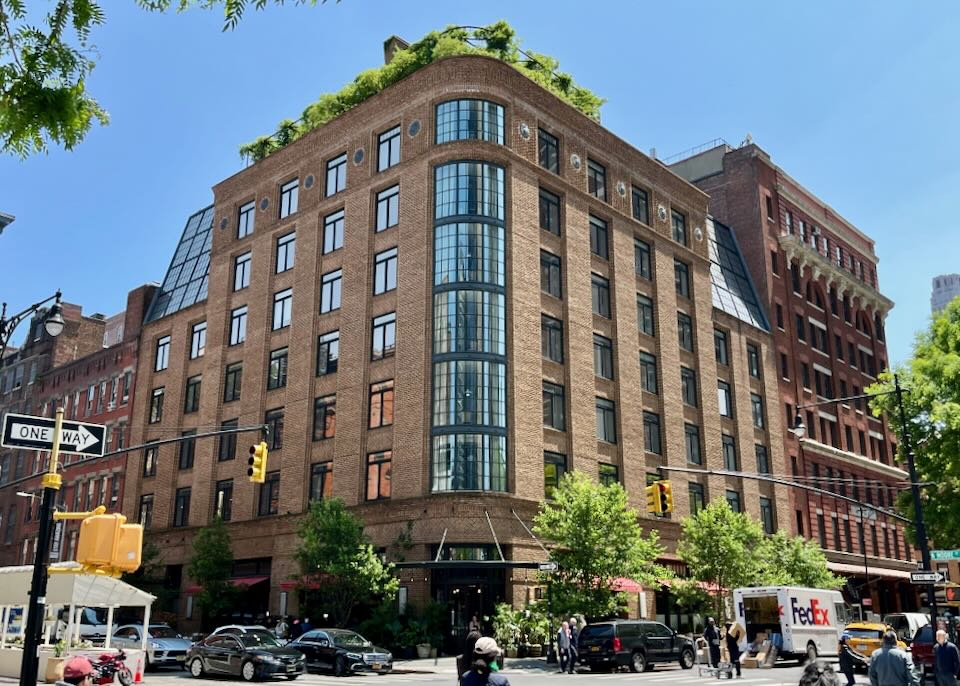
The excellent Greenwich Hotel in Tribeca.
- Best Hotels in Tribeca & SoHo
Barrière Fouquet’s New York • Hotel phone: +1 (917) 965-2600
The Broome • Hotel phone: +1 (212) 431-2929
Crosby Street Hotel • Hotel phone: +1 (212) 226-6400
The Greenwich Hotel • Hotel phone: +1 (212) 941-8900
ModernHaus SoHo • Hotel phone: +1 (212) 465-2000
The Roxy Hotel • Hotel phone: +1 (212) 519-6600
Soho Grand Hotel • Hotel phone: +1 (212) 965-3000- Best Midrange Hotels
Best Western Plus Soho • Hotel phone: +1 (646) 398-9909
Courtyard Manhattan/SoHo • Hotel phone: +1 (212) 414-82825. East Village
This partly gentrifying, one-time hippie haven from Houston to 14th Streets east of Third Avenue still offers many affordable restaurants, but new development near Houston and the neighboring Bowery have brought avant garde galleries, more upscale dining, and slick hotels. It’s still one of the city’s hippest neighborhoods, though, flooded with diners and a diverse party crowd at the weekends, especially students at NYU (many of whom live here). Make for Tompkins Square Park on a summer afternoon to soak up the vibe, grab a beer at McSorley’s Old Ale House (America’s oldest pub), or take in a poetry slam at Nuyorican Poets Cafe. New York’s Ukrainian community is represented by St George Ukrainian Catholic Church, the Ukrainian Museum, and restaurants like Streecha Ukrainian Kitchen and local favorite Veselka.
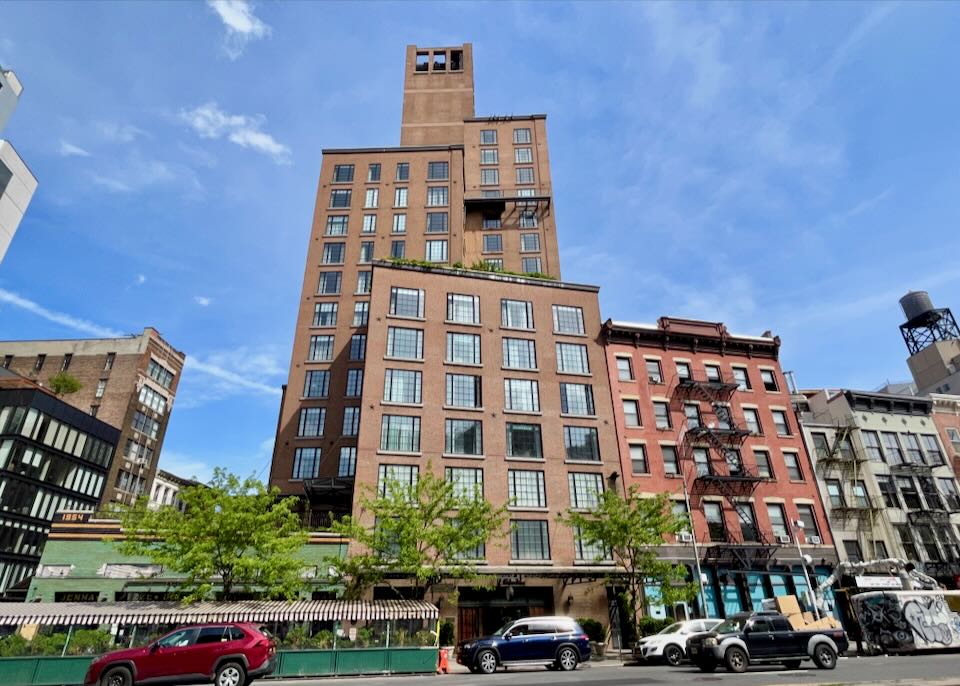
The Bowery is one of the best of the East Village’s few hotel options.
- Best Hotels in the East Village
The Bowery Hotel • Hotel phone: +1 (212) 505-9100
The Standard East Village • Hotel phone: +1 (212) 475-57006. Greenwich Village (aka West Village) & the Meatpacking District
No grid plan here, just a crazy maze of leafy lanes lined with charming 19th-century townhouses, many of which once housed famous artists, writers, and musicians. The cafes, clubs and coffeehouses of “the village” as the locals know it, have long been magnets for for a youthful crowd. This group includes students from New York University, a renowned institution that spans many blocks around Washington Square Park. The park itself is recognized as one of New York City’s most lively and active green spaces; its Washington Memorial Arch, built in 1892 by Stanford White, is always a hub of activity at the weekends.
In the northwest corner is the Meatpacking District. Once home to wholesale meat packers and desolate at night, the cobbled streets west of 9th Avenue near 14th Street have become one of the city’s liveliest centers for dining and clubbing. Two art museums worth a visit include the Whitney Museum of American Art, located at the southern end of The High Line, and the Museum of Illusions, an “Instagram museum” of wildly photogenic optical illusions.
Small groups of excited fans still congregate at the junction of Bedford and Grove Streets to see the exterior of Monica’s apartment from the hit 90’s TV show Friends, and “Carrie Bradshaw’s Apartment” at 66 Perry Street (featured in Sex and the City). The iconic LGBT venue The Stonewall Inn is America’s first National Monument dedicated to the LGBTQ-rights movement (which was sparked by riots that took place here in 1969), and will eventually feature a visitors’ center – the Gay Liberation Monument and new NY City AIDS Memorial are nearby.
Otherwise, West Village is mainly about eating, drinking, and live entertainment: cappuccino at historic Caffe Reggio; toasted sandwiches at Murray’s Cheese Shop; cupcakes at Magnolia Bakery; beers at the White Horse Tavern, where Dylan Thomas had his last drink; live jazz at the Village Vanguard; and laugh-out-loud jokes at the Comedy Cellar.
Like the East Village, this is a great area to visit, but with few hotel options.
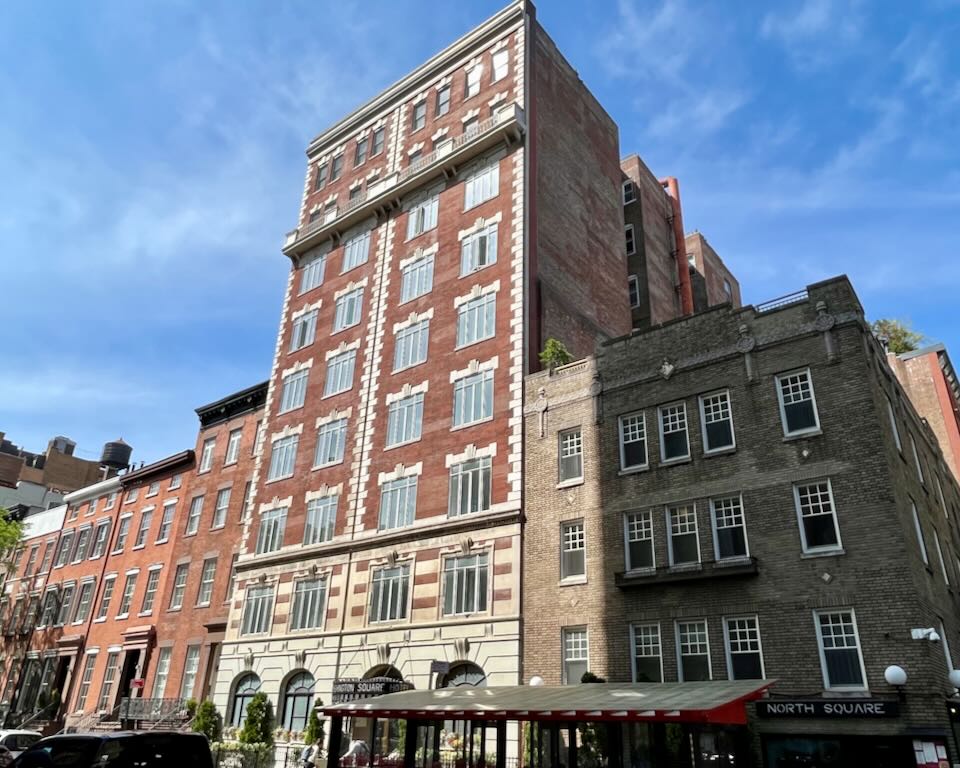
The historic Washington Square Hotel is ideally located for enjoying the bars and entertainment venues of the West Village.
- Best Hotels in Greenwich Village & Meatpacking District:
The Marlton Hotel • Hotel phone: +1 (212) 321-0100
Walker Hotel Greenwich Village • Hotel phone: +1 (212) 375-1300
Washington Square Hotel • Hotel phone: +1 (212) 777-9515
The Standard High Line • Hotel phone: +1 (212) 645-46467. Chelsea
Further north, from 22nd to 28th streets, the old warehouses of Chelsea now house dozens of art galleries. The area has blossomed in recent years, with swanky new hotels since the opening of the High Line, an elevated pedestrian park on a former rail line running from 13th to 34th streets. The Standard High Line Hotel is located directly atop the High Line.
Nearby, jutting out into the Hudson River, Little Island public park is one of the city’s newer attractions, its unique design featuring “tulip pot” concrete piles. Other highlights in the area include Chelsea Market, with its assortment of food stores and restaurants, the Rubin Museum of Art, specializing in paintings, sculptures, and textiles from Nepal and Tibet. Google has its New York HQ here, with a large retail store opposite Chelsea Market.
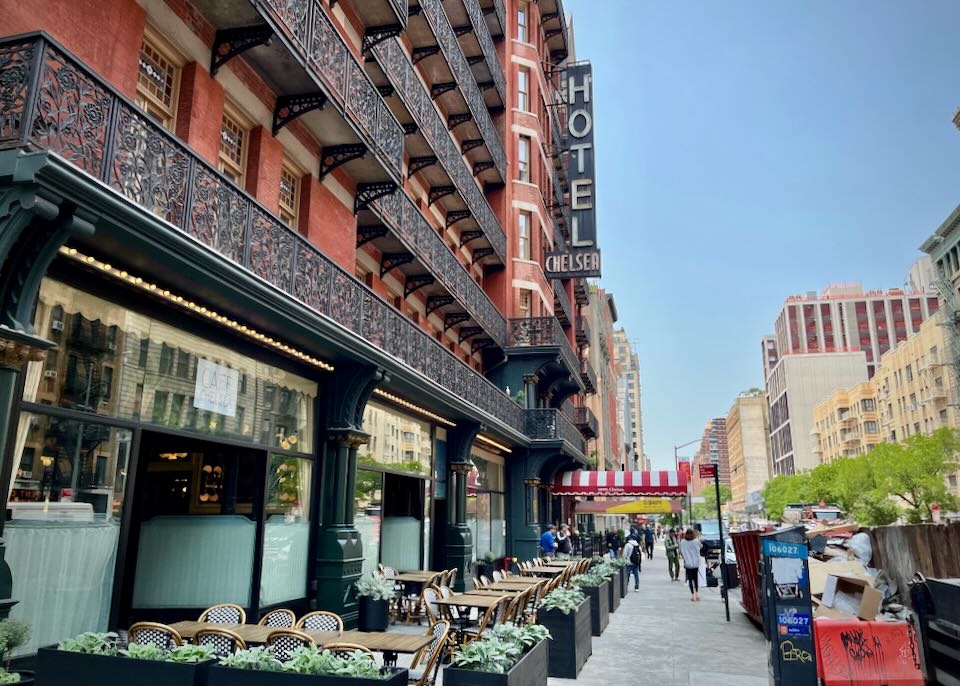
The iconic Hotel Chelsea is the historic stomping ground of forward-thinking celebrities ranging from Mark Twain to Janis Joplin to Robert Mapplethorpe.
- Best Hotels in Chelsea
The Hotel Chelsea • Hotel phone: +1 (212) 483-1010
The Maritime Hotel • Hotel phone: +1 (212) 242-4300
The Moore • Hotel phone: +1 (212) 255-5400
Motto Chelsea • Hotel phone: +1 (212) 668-8624
The High Line Hotel • Hotel phone: +1 (212) 929-3888- Best Cheap/Midrange Hotels
Cambria Chelsea • Hotel phone: +1 (212) 244-4477
The Leo House • Hotel phone: +1 (212) 929-1010- Best Hostel
Chelsea International • Hotel phone: +1 (212) 647-00108. Lower Manhattan & the Financial District
Its narrow twisting streets are evidence that this is the oldest part of the city, though today Wall Street and its surroundings are home to a forest of skyscrapers that dwarf the few remaining historic sites. With the completion of the new One World Trade Center (which features a sky-high observation deck) and the 9/11 Memorial and Museum, this area is booming with tourists and new shops, hotels, and restaurants.
You can learn about the lives of enslaved Africans in Colonial New York at the African Burial Ground Monument, eat outside at the restaurants along historic Stone Street, shop underneath Santiago Calatrava’s bizarre, dinosaur skeleton-like Oculus, see Alexander Hamilton’s grave at Trinity Church, or soak up the history at St Paul’s Chapel, the oldest church in Manhattan. The famous Charging Bull statue, iconic symbol of Wall Street, is often mobbed by tourist crowds (it actually stands on Broadway, just north of Bowling Green), while the Fearless Girl statue now stares down the front of the New York Stock Exchange on Broad Street.
Bowling Green is home to Smithsonian’s National Museum of the American Indian, while nearby Battery Park is launching point for ferries to the Statue of Liberty and Ellis Island. On the north side of the park, the Museum of Jewish Heritage is a poignant memorial to the Holocaust.
Over on the East River, the 1820s row houses of the Seaport District and old sailing ships of the South Street Seaport Museum have been joined by revamped mall Pier 17 and the Tin Building, a posh food market by Chef Jean-Georges Vongerichten. The Hall des Lumières serves as a spectacular immersive exhibit center on the edge of the Financial District (near City Hall and the wedding cake Manhattan Municipal Building), with themes that range from Gustav Klimt to space exploration.
The only way to reach Liberty, Ellis or Governors islands is by ferry from the foot of Manhattan (Battery Park). This is also where you catch the free Staten Island Ferry. Many Financial District hotels have good rates on weekends when business travelers go home, otherwise it tends to be pricey down here.
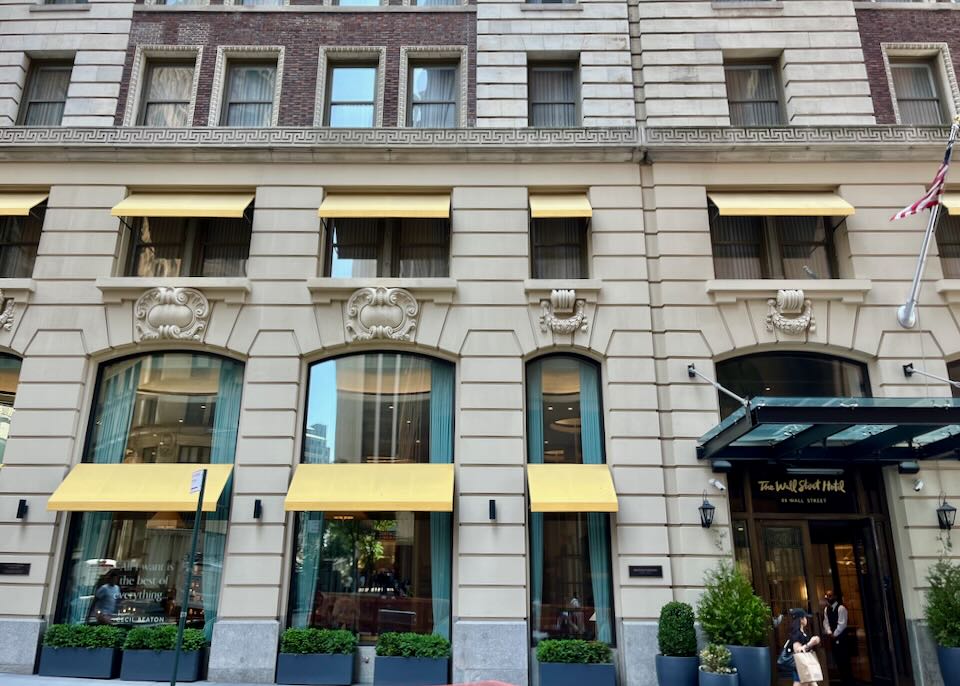
The 5-star Wall Street Hotel.
- Best Hotels in Lower Manhattan & Financial District
The Beekman • Hotel phone: +1 (212) 233-2300
Casa Cipriani New York • Hotel phone: +1 (212) 584-5801
Conrad Downtown • Hotel phone: +1 (212) 945-0100
Four Seasons Downtown • Hotel phone: +1 (646) 880-1999
Mint House at 70 Pine • Hotel phone: +1 (646) 598-0100
Wall Street Hotel • Hotel phone: +1 (212) 688-9255- Best Midrange Hotels
AC Hotel Downtown • Hotel phone: +1 (212) 742-1900
Artezen Hotel • Hotel phone: +1 (212) 566-5511
Hilton Garden Inn Financial Center/Downtown • Hotel phone: +1 (212) 248-1100
Hotel Indigo Downtown-Wall Street • Hotel phone: +1 (646) 869-6700
Wall Street Inn • Hotel phone: +1 (212) 747-15009. Lower East Side (including Nolita, Chinatown, & Little Italy)
The old ethnic neighborhoods of the city are changing. Crowded and ever-fascinating, Chinatown has mushroomed, taken over all but one street of what was Little Italy and rapidly absorbing much of the Jewish Lower East Side. However, on Orchard Street and blocks closer to Houston bordering the East Village, the area has been rediscovered by a new generation, and cool shops, clubs, and restaurants are blooming. The Tenement Museum is the best evidence of what used to be, and some Jewish culinary landmarks remain on Houston Street; legendary Katz’s Deli, Russ & Daughters, and knish-maker Yonah Schimmel. What’s left of Little Italy clusters along Mulberry Street, mostly red sauce restaurants and bakeries, though the Italian American Museum is a good place to learn about the history of the area.
The blocks around St Patrick’s Old Cathedral are known as Nolita (“North of Little Italy”), one of the hippest parts of the city, home to fashion boutiques and cool restaurants, as well as the stylish New Museum of Contemporary Art over on the Bowery. You can learn about Chinese American history at the Museum of Chinese in America before wandering Chinatown’s main drag, Mott Street, packed with restaurants, souvenir stalls, Chinese bakeries, and tea shops. The Museum at Eldridge Street, a fully restored, working synagogue, offers a glimpse of the Jewish Lower East Side at its heyday, while the future is represented by Essex Crossing, a huge mixed-use development at the intersection of Delancey and Essex streets that includes Essex Market, The Market Line mall, and the International Center of Photography museum.
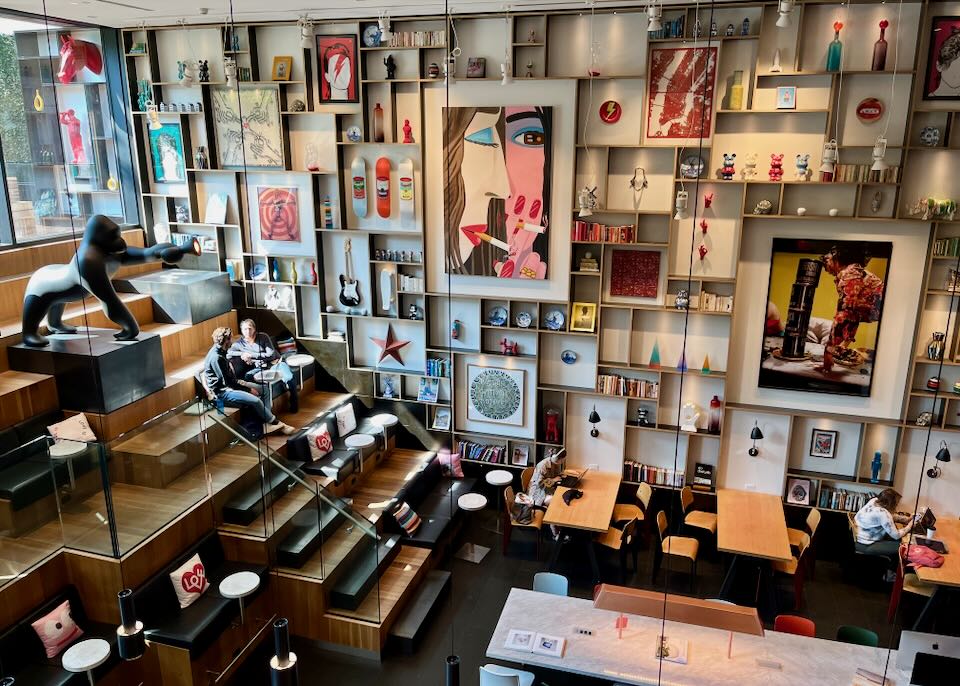
citizenM Bowery is a great midrange hotel on Nolita’s eastern edge.
- Best Hotels on Lower East Side
Hotel 50 Bowery • Hotel phone: +1 (212) 508-8000
Ludlow Hotel • Hotel phone: +1 (212) 432-1818
Nine Orchard • Hotel phone: +1 (212) 804-9900
NobleDen Hotel • Hotel phone: +1 (212) 390-8988
Kasa Lantern Lower East Side • Hotel phone: +1 (650) 451-3444- Best Midrange Hotels
citizenM Bowery • Hotel phone: +1 (212) 372-7274
Holiday Inn Lower East Side • Hotel phone: +1 (212) 475-2500
Hotel Mimosa • Hotel phone: +1 (212) 343-424310. Brooklyn
No longer in Manhattan’s shadow, Brooklyn has emerged as a fully-fledged tourist destination in its own right; a patchwork of neighborhoods featuring gorgeous brownstones, award-winning restaurants, hip bars, craft markets, superb museums and galleries, and cutting-edge performance spaces. Brooklyn is a surprisingly large borough, and it’s best to view it as a series of separate neighborhoods connected by bus, ferry, and subway. Many of the top attractions in Brooklyn are concentrated in neighborhoods close to the East River, just across from Manhattan: the Fulton Ferry District, Dumbo (summer location of the Brooklyn Flea arts and craft market, and year-round Time Out Market New York), Brooklyn Heights, and just inland, Downtown Brooklyn itself.
But this just scratches the surface; to the south lies trendy Boerum Hill, Cobble Hill, and Carroll Gardens (collectively known as “BoCoCa”), and the old-school waterfront district of Red Hook, while further inland (encompassing the borough’s highest point) is affluent Park Slope and the green swathe of Prospect Park – major attractions such as the Brooklyn Museum and Brooklyn Botanical Gardens are here. The northern sector of Brooklyn includes Williamsburg and Greenpoint, slightly cut off from the rest of the borough but dynamic cultural and nightlife hubs of their own. Williamsburg is home to the lauded Brooklyn Brewery (which gives free tours), and Smorgasburg summer food market, as well as some of the best boutique hotels in New York (with sensational views of Manhattan).
Way off to the south, facing the Atlantic, is Coney Island, New York’s loveably vintage seaside resort. The beach is still a huge swathe of golden sand that’s usually packed in summer, and the famous wooden boardwalk is a hive of activity, anchored by Nathan’s Famous hot dogs, the iconic Luna Park amusements (such as the Coney Island Cyclone), and Deno’s Wonder Wheel.
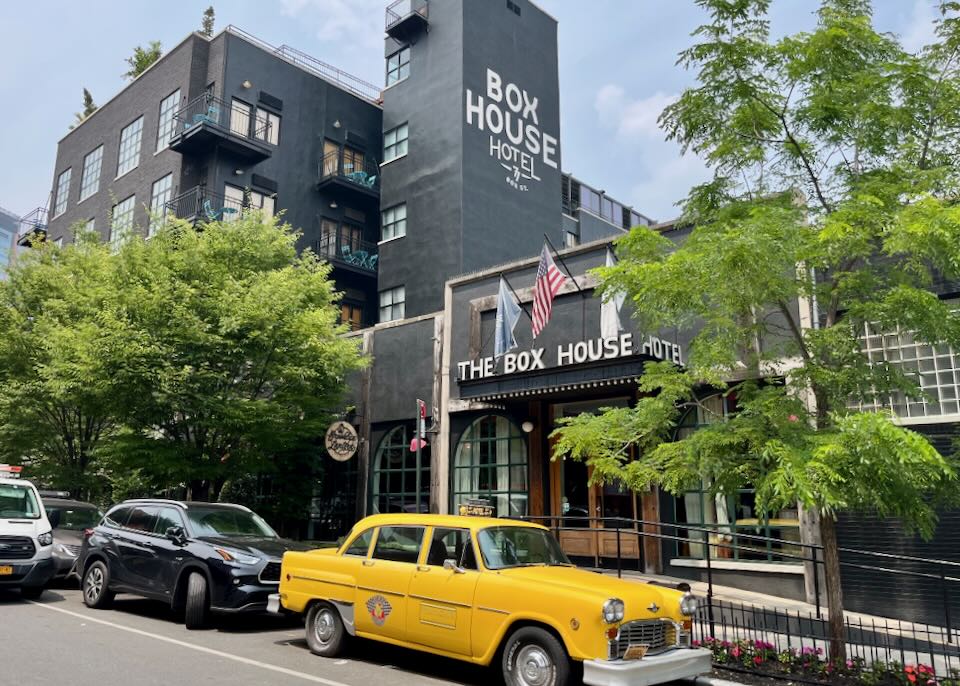
The wonderful Box House Hotel is located in Brooklyn’s Greenpoint neighborhood.
- Best Hotels in Brooklyn
1 Hotel Brooklyn Bridge • Hotel phone: +1 (833) 625-6111
Ace Hotel Brooklyn • Hotel phone: +1 (718) 313-3636
The Box House Hotel • Hotel phone: +1 (718) 383-3800
Franklin Guesthouse • Hotel phone: +1 (718) 383-3900
The Hoxton, Williamsburg • Hotel phone: +1 (718) 215-7100
Penny Williamsburg • Hotel phone: +1 (929) 594-2020
The William Vale • Hotel phone: +1 (718) 631-8400
Wythe Hotel • Hotel phone: +1 (718) 460-8000- Best B&Bs in Brooklyn
Akwaaba Mansion • Hotel phone: +1 (718) 455-5958
Rhonda’s Bed and Breakfast • Hotel phone: +1 (347) 409-2450- Best Midrange Hotels in Brooklyn
Hampton Inn Brooklyn/Downtown • Hotel phone: +1 (718) 875-8800
Moxy Brooklyn Williamsburg • Hotel phone: +1 (718) 782-6699
Pod Brooklyn Hotel • Hotel phone: +1 (844) 763-7666
Pointe Plaza Hotel • Hotel phone: +1 (718) 782-7000- Best Hostel in Brooklyn
NY Moore Hostel • Hotel phone: +1 (347) 227-8634More New York City Neighborhoods
We’ve covered our favorite neighborhoods to visit and stay in more detail above, but with more time these districts are also worth checking out:
- The Flatiron District, NoMad, & Gramercy Park: These once unexciting neighborhoods between the East and West Villages and Midtown Manhattan are now part of an up-and-coming zone of brand-new hotels, hip restaurants, and contemporary museums. The neighborhood north of Union Square is known as the Flatiron District, after the iconic triangular skyscraper on the southwest corner of Madison Square Park. Other highlights include Theodore Roosevelt’s Birthplace (the rebuilt home where the 26th president was born in 1858), The FRIENDS™ Experience (a kitsch but fun homage to the beloved TV show), Eataly NYC Flatiron (a giant Italian food emporium), and the original Shake Shack burger stall in Madison Square Park.The up-and-coming neighborhood north of here is known as NoMad, home to the family-friendly National Museum of Mathematics, adults-only Museum of Sex, and many excellent restaurants. To the east, upscale Gramercy Park features the wonderful Fotografiska Museum NYC photography gallery and the National Arts Club, which hosts temporary art exhibitions, free of charge. Our favorite hotels here are the Ritz-Carlton NoMad, New York EDITION, Hotel Giraffe, Virgin New York City, and the cheaper Flat NYC. The highly anticipated Fifth Avenue Hotel opened on October 16 (though I haven’t visited yet).
- Harlem & Washington Heights: Manhattan north of Central Park and 110th Street is dominated by Harlem, the country’s most famous African American community. Since the Harlem Renaissance of the 1920s, it’s been through several cycles of hard times, though before the COVID epidemic it was experiencing a sustained period of (controversial) gentrification and regeneration. There’s lots to see and experience here: the exhibitions at the Schomburg Center for Research in Black Culture, soul food at Marcus Samuelsson’s Red Rooster or iconic Sylvia’s, the revamped Studio Museum, the Museo del Barrio for Puerto Rican and Latino culture and art, the Africa Center for art exhibitions highlighting contemporary Africa and its diaspora; and the Abyssinian Baptist Church with its incredible Gospel choir on Sunday.Further north, Washington Heights is New York’s Little Dominican Republic. Highlights up here include Hamilton Grange National Memorial, last home of founding father Alexander Hamilton; the newly renovated Hispanic Society Museum; the colonial Morris-Jumel Mansion; and the wonderful Cloisters Museum, home to the Met’s collection of medieval tapestries, paintings, and sculpture. Our favorite hotels up here are Aloft Harlem, Mount Morris House, and the brand-new Renaissance New York Harlem Hotel.
- Queens: Most visitors’ only experience of Queens is the airport, but there’s lots to see and do here, especially if this is your second or third visit to New York. For New Yorkers, Queens is synonymous with food – you can sample just about every cuisine on earth in this multi-cultural borough, with authentic diners offering much cheaper prices than Manhattan. In terms of sights, there’s the contemporary art center MoMA PS1, Noguchi Museum, and Museum of the Moving Image in Long Island City/Astoria, close to Midtown, as well as some of the city’s best craft breweries.Farther out, Flushing Meadows Corona Park encompasses Citi Field (home of the New York Mets baseball team), the USTA Billie Jean King National Tennis Center (home of the US Open Tennis Championships), the Queens Museum, Queens Zoo, and New York Hall of Science. Jazz fans should make a pilgrimage to the Louis Armstrong House Museum, the jazz legend’s home between 1943 and his death in 1971.Our favorite hotels in Queens include Aloft Long Island City, Home2 Suites, LIC Hotel, The Local NY, and The Modernist Hotel in Long Island City, a short subway ride from Midtown Manhattan.
- The Bronx: Parts of the South Bronx remain sketchy, but a visit to Yankee Stadium to see the New York Yankees play baseball is a classic New York experience. Elsewhere you’ll be surprised at just how diverse the Bronx is, and how much there is to see: the authentic Little Italy section of Belmont, the Bronx Zoo, and the New York Botanical Garden make for an excellent (and perfectly safe) day out. With more time you could explore the historic Wave Hill estate, Woodlawn Cemetery (tranquil resting place of many famous New Yorkers), Van Cortlandt Park, or the fish shacks on City Island. The Bronx is an easy day trip from Manhattan, but if you’d like to stay over to soak up the vibe, the best hotels in the South Bronx are Opera House Hotel and Wingate Bronx/Haven Park.
Getting Into and Around New York
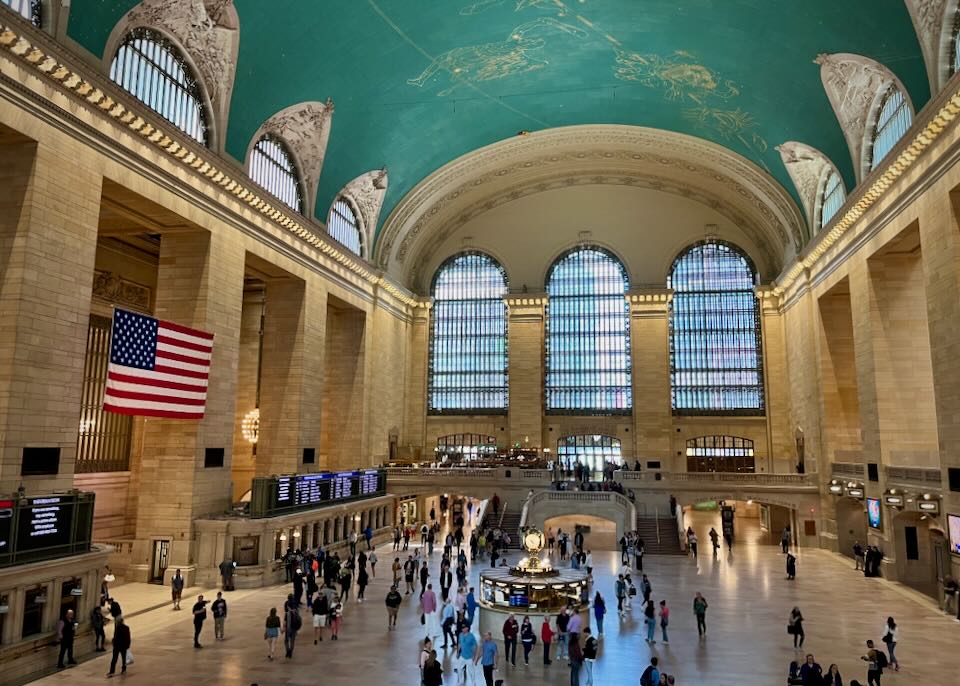
Grand Central Station.
Learning the transit system is not difficult since much of central Manhattan is laid out on a grid with cross streets clearly numbered.
- If numbers go up, they are leading north or uptown, descending numbers head south or downtown. Most of the avenues are one-way, so buses generally travel in only one direction; major two-way arteries like 14th, 34th, 42nd, and 57th streets have buses going in both directions. (Route maps are posted at every stop).
- Subway stations are labeled either uptown or downtown to show the direction of the trains on that track. “Crosstown” literally means going across the city from east to west. Fifth Avenue is the dividing line between what New Yorkers call “east side” and “west side” in Manhattan. A subway shuttle train crosses the city on 42nd Street from Grand Central Terminal to Times Square.
- To calculate distances, 20 blocks in Manhattan equals roughly one mile. For example, Midtown between 34th and 59th streets, where many famous sights are found, is less than 1.5 miles long and easily walkable. The winding lanes in the older parts of the city also are quite walkable, but in these areas, street maps or mobile phone maps are recommended to guide your way.
Hotels within steps of NYC subway station: Sheraton Times Square • citizenM Times Square • Smyth Tribeca • The New Yorker • Courtyard Times Square • The Knickerbocker • Mandarin Oriental • The Sherry Netherland • Equinox • Hotel Indigo Financial District
Getting into Manhattan from the Airport
Don’t rent a car. It’s not a good idea to drive in New York at all, either in your own car or in a rental. Roads are often congested, and parking is ludicrously expensive. Many of the tunnels and bridges into Manhattan have hefty tolls.
Public transport (subway, buses) is cheap and efficient in New York, and it’s surprisingly easy to simply walk between major sights. Taxis and Uber/Lyft cars are also readily available. Taxis are still the best option for those with lots of luggage or arriving late/early. Look for the yellow “taxi” signs exiting the terminal and follow the official lines – ignore the touts, they are likely to overcharge. Uber and Lyft offer slightly cheaper rates than regular taxis from the airports, though the pickup areas are different – look for signs or ask an official.
If arriving on the eve of a major public holiday, or very late at night, booking a car service in advance (like Welcome Pickups can save time, but there are usually plenty of yellow cabs and Uber cars available 24hrs.
How to get to Manhattan from Newark Airport
Newark Liberty International Airport is across the Hudson River in New Jersey, around 14 miles southwest of Times Square.
• Newark Airport Express runs to Grand Central Station, Port Authority Bus Terminal and Bryant Park (one block east of Times Square) every 20 to 45 minutes daily between 4am and 1am. The journey takes around 50 minutes depending on traffic. The one-way fare is $18.70.
• Go Airport Shuttle runs shared minibus services to hotels in Manhattan (starting at around $45to Midtown), but this must be reserved in advance and times must be flexible.
• By train: All the Newark Airport terminals are connected by the AirTrain to the nearby Newark Liberty International Airport Train Station. Once at the station you can take frequent NJ Transit trains heading into Manhattan (30 minutes to Penn Station) for $15.50. The AirTrain runs 24 hours (every 3-15 minutes) and costs $8, but this is included when buying a NJ Transit ticket from machines in the AirTrain terminals or at the main station – there’s no need to pay separately for the AirTrain. Don’t get off at Newark Penn Station, the first stop after the airport!
• Taxis from Newark into Manhattan charge around $55 to $75 metered fare, plus $1.25 Airport Access Fee (pick-ups only), round-trip bridge and tunnel tolls and gratuity. It’s possible to ask the driver to avoid toll roads in New Jersey, but to get to Manhattan the taxi will need to take the Lincoln or Holland toll tunnels. Reckon on spending around $85-100 to most hotels in Midtown Manhattan (allow 45 to 60 minutes).
How to get to Manhattan from JFK
JFK International Airport is located in Queens, around 14 miles southeast of Times Square in Manhattan.
• Go Airport Shuttle offers shared minibus services direct to hotels (from around $46 to Midtown Manhattan), but these must be reserved in advance and times must be flexible.
• By train/subway: The cheapest way into the city. Take the AirTrain from the terminal to the Jamaica or Howard Beach stations in Queens. A charge of $8 is payable when exiting the AirTrain. From either station it’s just $2.75 into the city on the subway: E, J, Z from Jamaica, and A from Howard Beach. Travel time to Manhattan is usually around one hour. From Jamaica there is also the option of taking the faster LIRR (Long Island Rail Road) to Penn Station ($7.75 off-peak, $10.75 peak; 19-21 minutes); buy tickets at Jamaica station, as fares are much more expensive if purchased on board the train.
• Taxis charge a flat rate of $70 to anywhere in Manhattan from JFK (plus a 50-cent MTA state surcharge, a $1 improvement surcharge, a $5 rush-hour surcharge 4 to 8pm weekdays except legal holidays, a New York State Congestion Surcharge of $2.50, bridge and tunnel tolls, and a tip of 10-20 percent). Tolls are extra, but there are no mandatory tolls between JFK and Manhattan – the bridges across the East River are free. However, tolls are payable using the Queens-Midtown Tunnel, which can sometimes be faster to Midtown hotels. If time is not an issue, insist that the driver takes a “free” bridge to avoid the toll (the same goes for Uber/Lyft drivers).
How to get to Manhattan from LaGuardia
LaGuardia Airport is in northern Queens, around 8 miles northeast of Times Square.
• Go Airport Shuttle offers shared minibus services to hotels (from around $40 to Midtown Manhattan), but these must be reserved in advance.
• City bus: LaGuardia is not connected to the subway system, so the cheapest way into the city is to take a local bus. The Q70 LaGuardia Link(which is free)runs every 10 minutes (24hrs) to subway stations at Woodside (#7 plus LIRR services) and Jackson Heights (#7, E, F, M, R) in Queens, while the M60 bus runs into northern Manhattan (every 7-30 minutes, 24hrs), along 125th Street (for #2, #3, #4, #5, #6, A,B, C, D subway lines) and down Broadway to West 106th Street.
• Taxis from LaGuardia use the meter and are usually good value; reckon on $35-45 into Manhattan plus tip and surcharges (Mon-Fri 4-8pm $1 or daily 8pm-6am 50 cents; NY State tax of 50 cents added to all trips; $1.25 Airport Access Fee for pick-ups only; 50 cent MTA state surcharge, plus a 30 cent improvement surcharge). Tolls are also extra, but it’s possible to avoid the Midtown Tunnel (see above).
New York Airport Hotels
There’s not much point in staying at the airports, but if you do need to stay here (for a very early flight, for example), the best hotel at JFK isthe conveniently located (and extremely atmospheric) TWA Hotel, within walking distance of the terminals, while the Residence Inn is the best value of the hotels just outside the airport. For LaGuardia, Aloft is a solid choice, while The Marriott is the only hotel inside Newark Airport. You’ll find all the usual chain motels and hotels just outside the airport on the highway, though nothing really stands out.
NYC Travel Tips
- New York City is served by John F. Kennedy International Airport (JFK) and LaGuardia Airport (LGA), both in Queens, and Newark Liberty International Airport (EWR) in neighboring New Jersey. LaGuardia mainly serves domestic destinations, plus some Canadian cities. Taking local city buses, trains, or subways from the airports is the cheapest way into Manhattan, but this is not recommended for those with heavy luggage or for first-time visitors. See “Getting Into and Around New York,” below.
- There are a bewildering number of New York City discount cards available, but these are only a good investment if you intend to visit a lot of sights. The longer the pass is valid, the more you’ll usually get out of it, but the only way to be sure is to examine each one and do the math. The main cards are: New York CityPASS, Go City New York Explorer Pass, The New York Pass, The New York Sightseeing Pass, and New York C3 by CityPASS.
- Free wi-fi is available at all 3 New York airports, and at cafés and museums throughout the city itself.
- Cycling is a popular form of transportation in New York, with most streets enhanced with bike lanes, and dedicated cycle paths running along the waterfront and in most parks. New York’s official bike share scheme is Citi Bike. A credit card is required to access the bikes at docking stations throughout the city – check the website for full details. Though cycling along the Hudson River and around Central Park can be a lot of fun, we don’t advise first-time visitors to travel the city streets by bike – traffic can be heavy and tough to handle for inexperienced riders.
The Best Hotels in New York City
1. Mandarin Oriental – Upper West Side
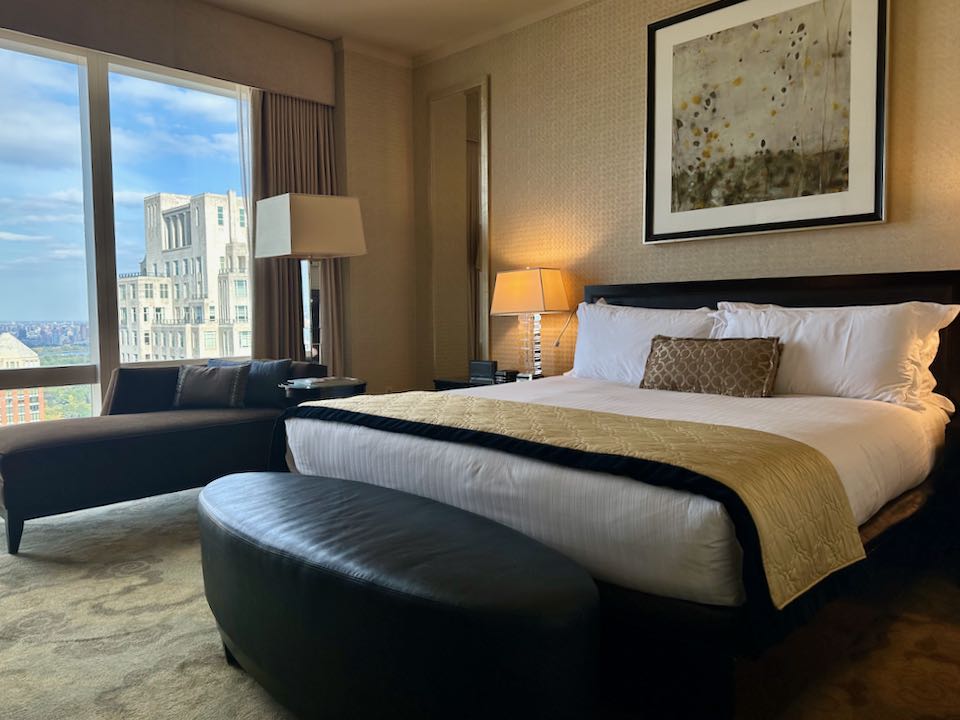
Hotel phone: 212-805-8800
Gorgeous five-star hotel nestled in the heart of Manhattan, the Mandarin Oriental offers a sublime escape amid the city’s bustling energy. With Central Park at its doorstep, this luxury sanctuary boasts 244 chic rooms, marrying contemporary elegance with Asian-inspired touches. Hudson River, Manhattan, or Central Park (recommended) views. There’s a nice pool and huge and luxurious spa. Lobby is on 35th floor. The last time I stayed here I did the afternoon tea, highly recommended.
Check Prices on Booking.com
2. The Pierre – Upper East Side
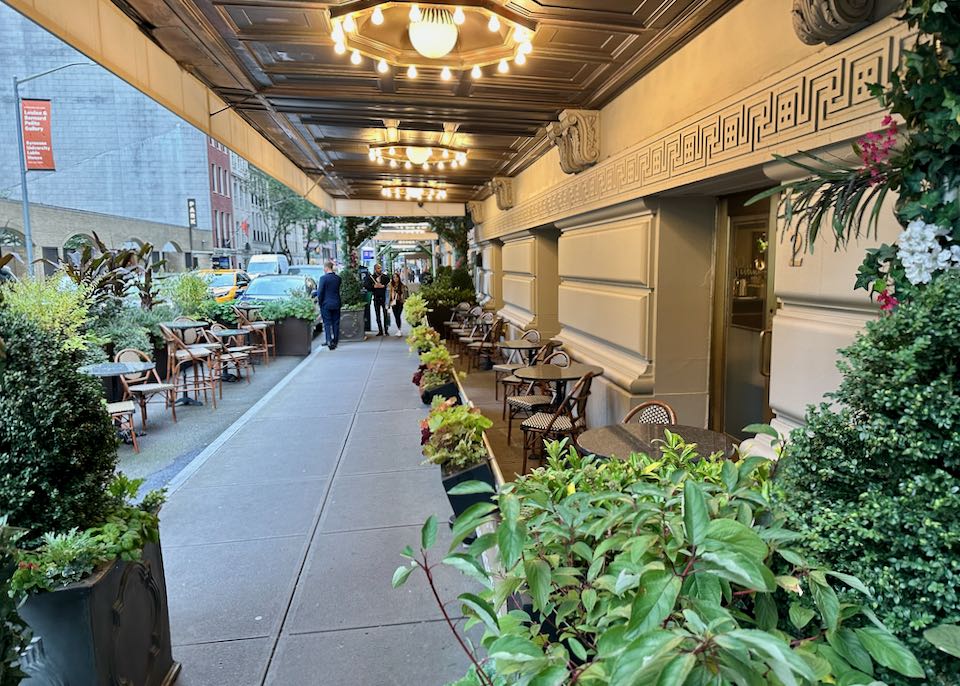
Hotel phone: 212-838-8000
A New York City landmark, The Pierre Hotel gracefully presides over the edge of Central Park, exuding an air of timeless elegance. With 189 lavish guest rooms and suites, the hotel is a testament to classic charm and contemporary luxury. The iconic Perrine restaurant and the delightful Two E Bar & Lounge invite guests to indulge in exceptional cuisine and sumptuous afternoon teas. Steeped in history, The Pierre has played host to numerous luminaries and unforgettable events, earning its storied reputation. Walking distance from Fifth Avenue’s luxury shopping and Manhattan’s finest cultural institutions, this sophisticated gem stands as a quintessential embodiment of the New York City experience.
Check Prices on Booking.com
3. Library Hotel – Midtown East
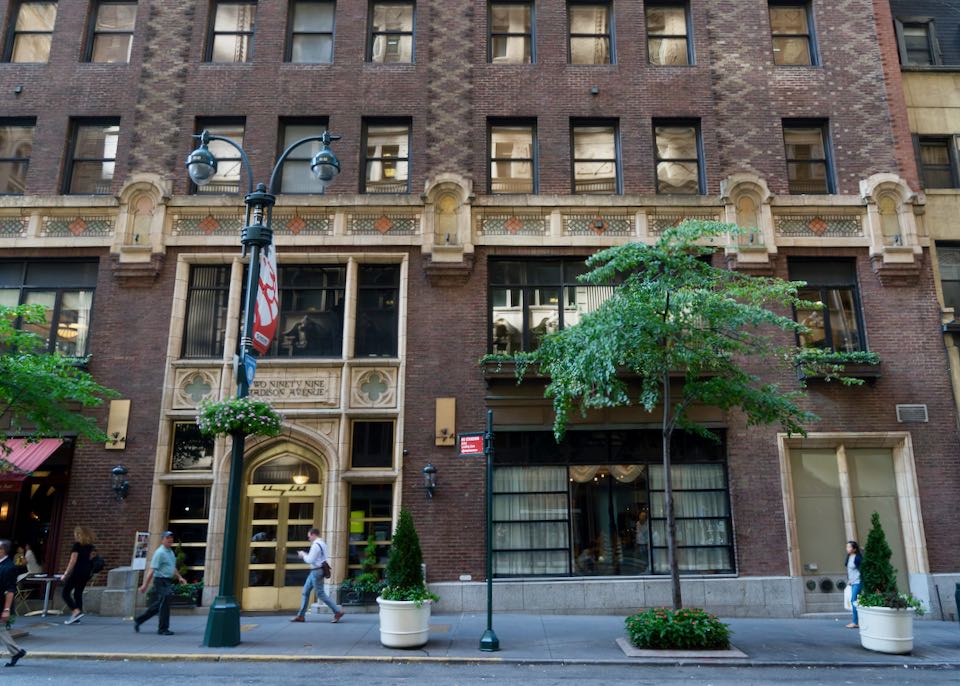
Hotel Phone: 212 983 4500
Just around the corner from the Grand Central Station, this library-themed boutique hotel (floors devoted to Math & Science, Arts, Technology – 10 categories in all) has intimate (i.e. not huge), well-appointed rooms with specialized art & libraries (related to the floor: mythology room on the religion floor with mythical art/books), mini-fridges, and city views. Suites add sitting areas and sofa beds. Has a ‘Love’ room which features the hotel’s only private terrace. Excellent value for the level of luxury – continental breakfast, refreshments and evening wine & cheese receptions, all complimentary. Great rooftop bar. I stayed here on my last visit to New York and loved it.
Check Prices on Booking.com
4. The Peninsula New York – Midtown West
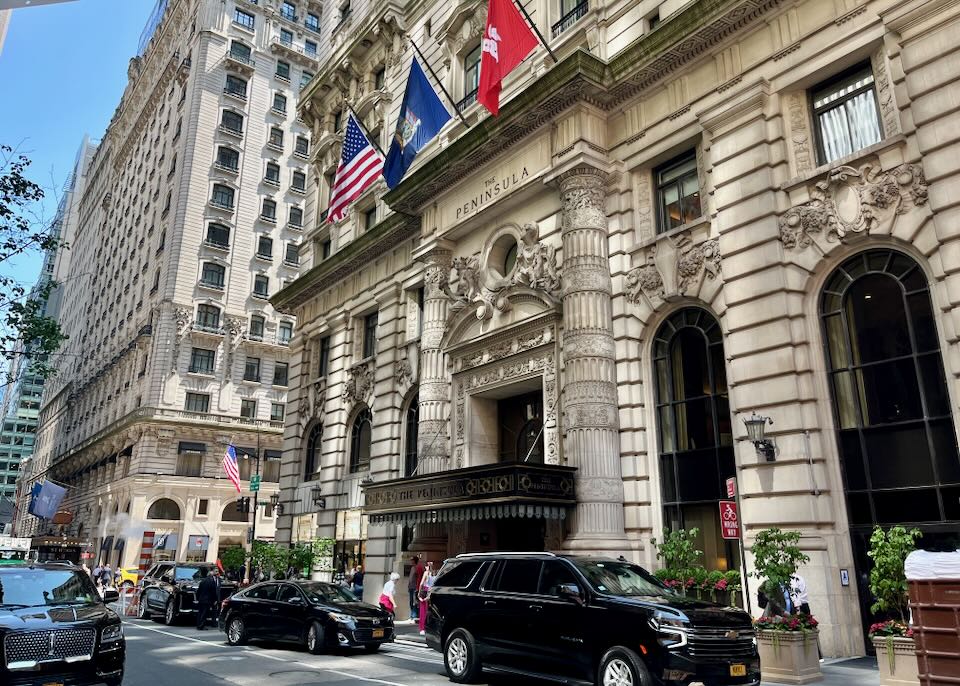
Hotel Phone: 212 956 2888
Landmark hotel (1905) with classically-styled, comfortable rooms and suites with oversized work desks, sunken tubs with TVs and courtyard/city views. Suites add living rooms, sofa beds, dressing areas, oversized walk-in closets, powder rooms, decorative fireplaces, dining rooms, gourmet kitchens, and private studies, depending on the category. City-view rooms are much brighter and better than courtyard-view rooms.
Check Prices on Booking.com
5. Crosby Street Hotel – SoHo
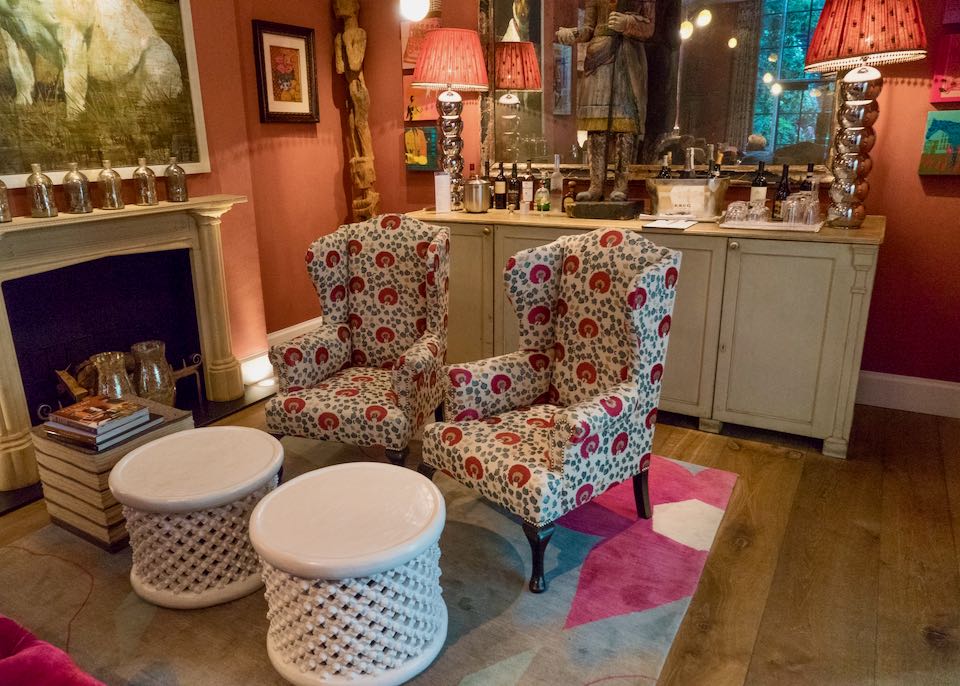
Hotel Phone: 212 226 6400
Refined Kemp-designed boutique hotel in the heart of Soho, with fresh, spacious rooms and suites having colorful designer headboards, high ceilings, full-length windows, Bluetooth Bose units, marble bathrooms and lower Manhattan/garden views. Suites add sitting areas, living & dining areas, deep bathtubs, bespoke mini-bars depending on the class. The two-bedroom Crosby Suite is fantastic.
Check Prices on Booking.com
6. The Langham – Midtown West
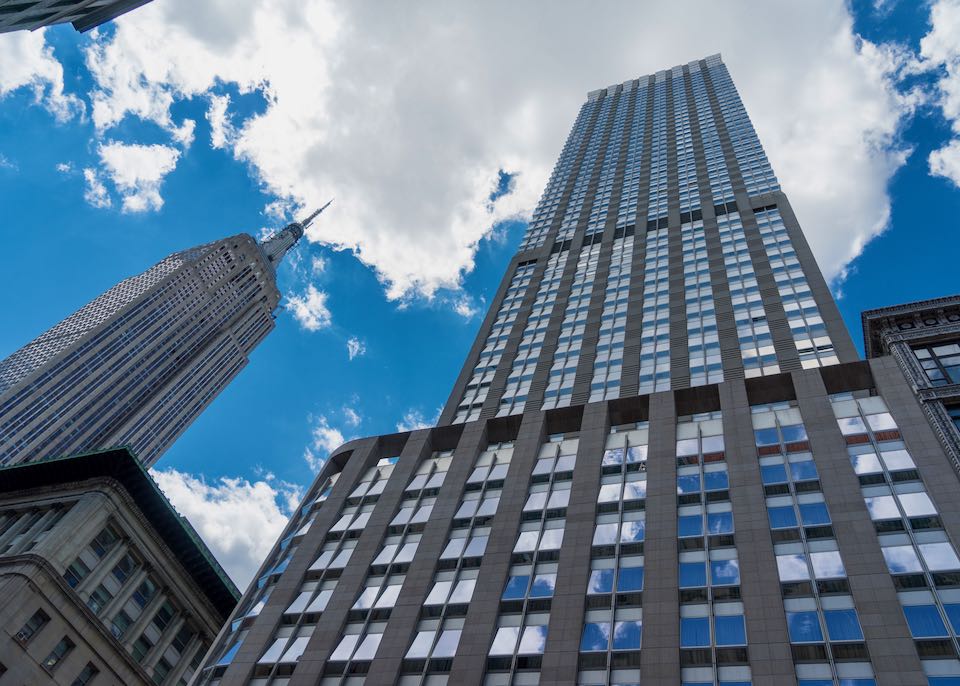
Hotel Phone: 212 695 4005
Sophisticated urban hotel with contemporary rooms and suites (1-4 beds) with floor-to-ceiling windows, Nespresso coffee makers, mirror tvs in the marble bathrooms & deep soaking tubs, and courtyard/street/city views. Upgraded rooms have full kitchens with Miele appliances (stoves, ovens, fridges) and walk-in wardrobes. Suites add sitting areas & terraces with unparalleled views of the Empire State Building (just two blocks away).
Check Prices on Booking.com
7. Pendry – Midtown West
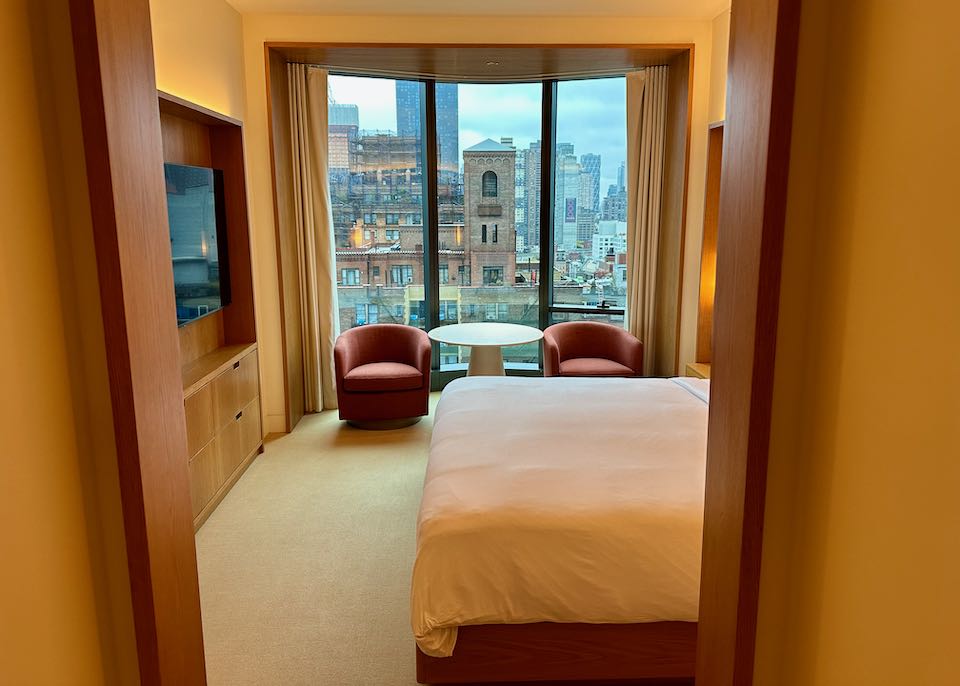
Hotel Phone: 212 933 7000
The best new hotel to open in Manhattan in several years. Trendy luxury with no stuffiness. One-bedroom suites comfortably sleep a group of 4. Short walk to Penn Station, Madison Square Gardens, and Hudson Yards (indoor mall). Steps from a Whole Foods grocery store, Starbucks, and the start of the High Line elevated walking path (one of my favorite outdoor attractions in the city).
Check Prices on Booking.com
8. Beekman – Financial District
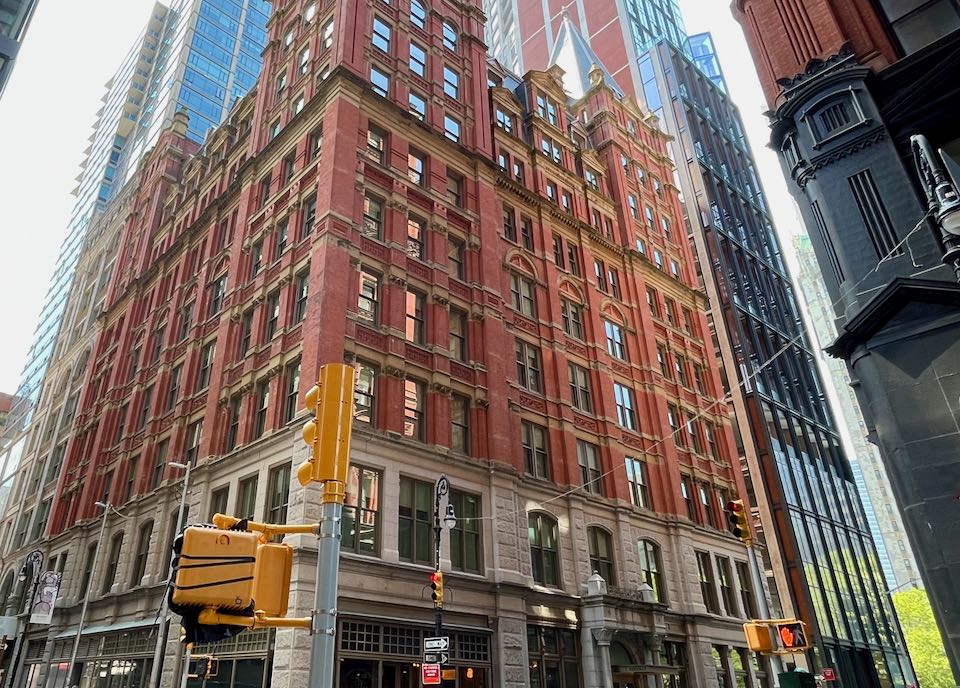
Hotel Phone: (212) 233-2300
Awesome luxury hotel located a short walk to Wall Street and the 9/11 Memorial and Museum. Several stunning restaurants. Rooms and suites are beautifully furnished. Penthouses are among the finest in the city.
Check Prices on Booking.com
Summary: My Favorite Hotels in Manhattan
• 5-star: Mandarin
• 4-star: Archer • Pendry
• 3-star: citizenM
• For families: AKA
• For couples: Library • Crosby
• Times Square: Marriott
• Central Park: Pierre
• Penn Station: Renaissance
• Grand Central: Library
• Empire State Bldg: Langham
• Lower Manhattan: Crosby
• Financial District: Beekman
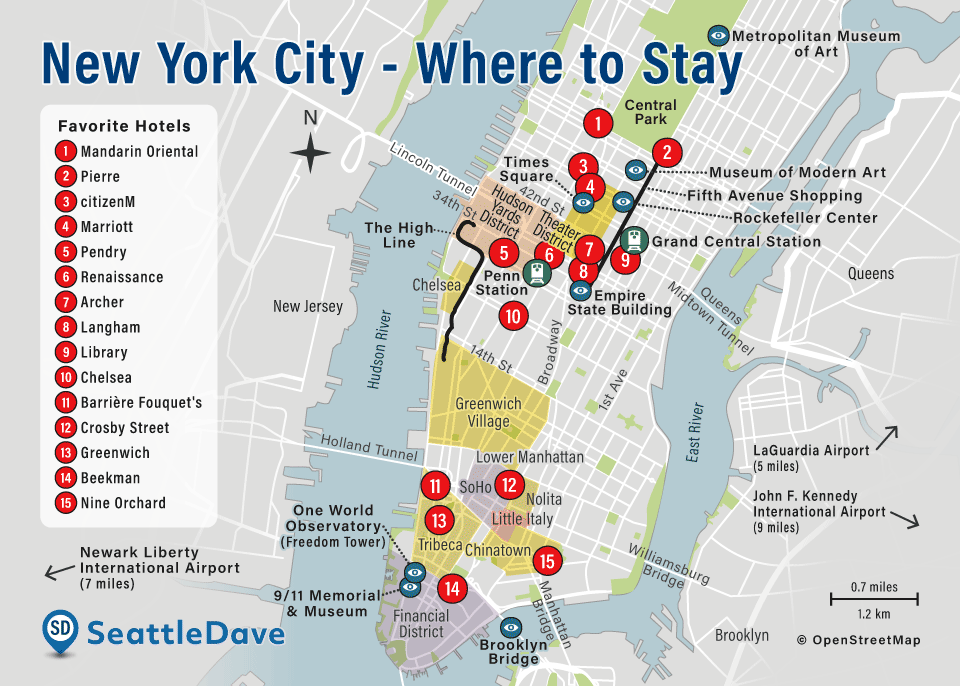
1. Mandarin Oriental • 2. Pierre • 3. citizenM • 4. Marriott • 5. Pendry • 6. Renaissance • 7. Archer • 8. Langham • 9. Library • 10. Chelsea • 11. Barrière Fouquet’s • 12. Crosby St. • 13. Greenwich • 14. Beekman • 15. Nine Orchard
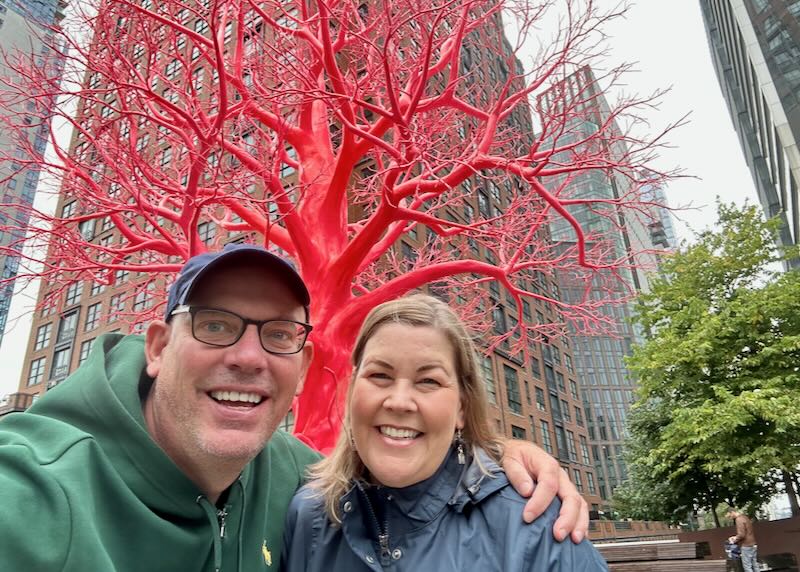
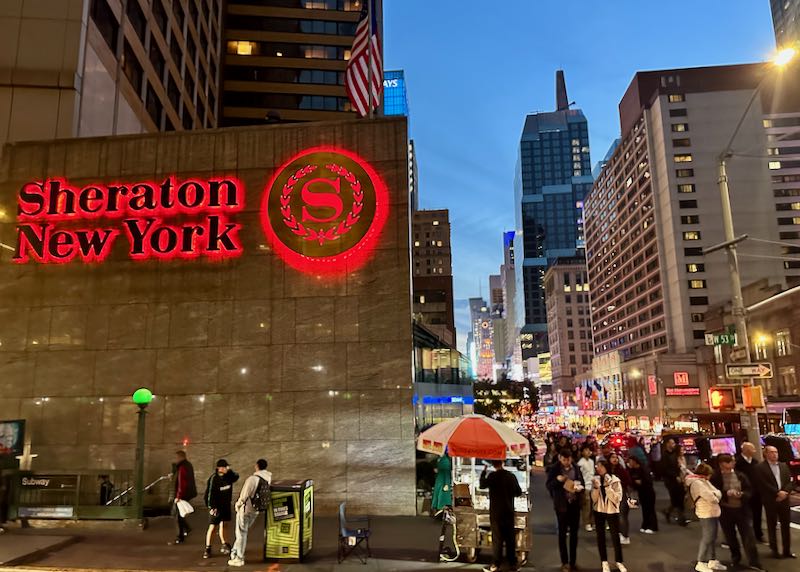
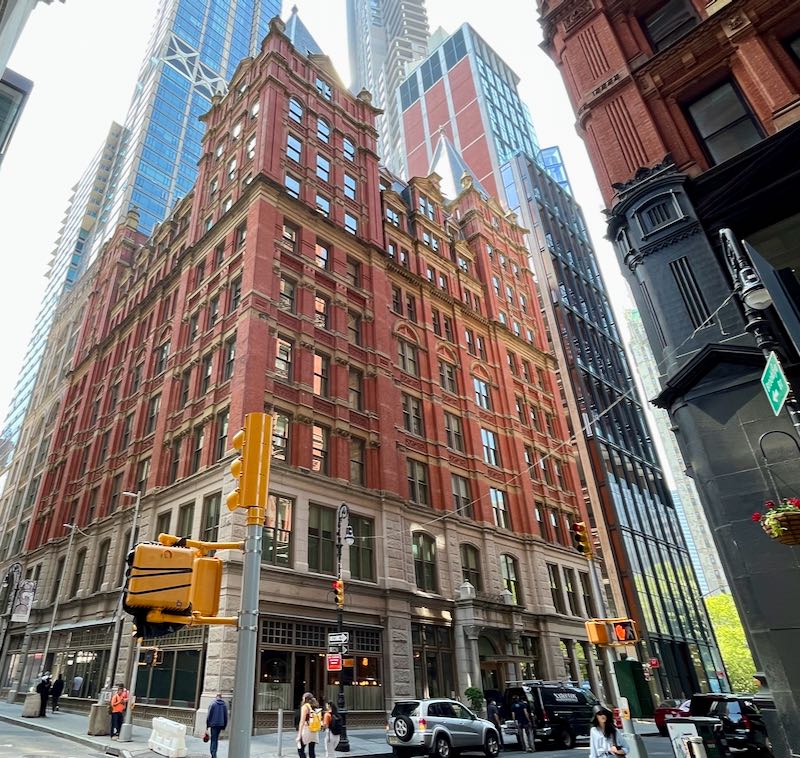
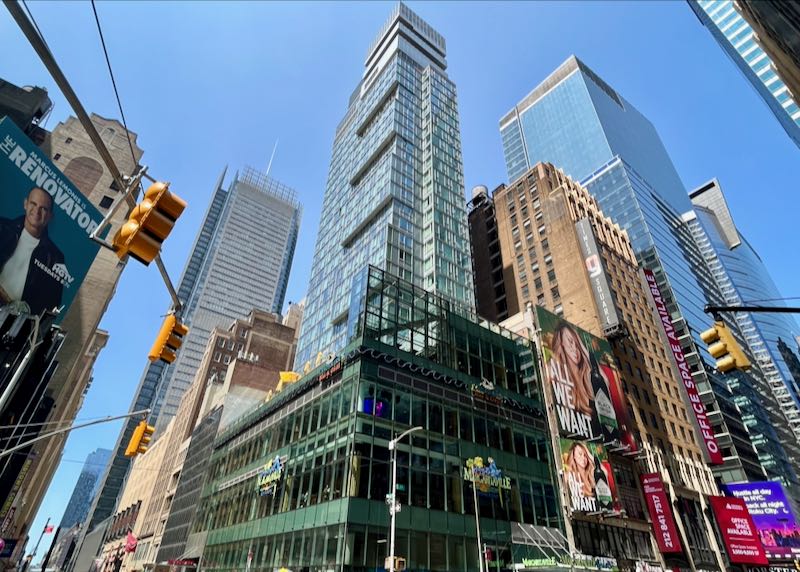
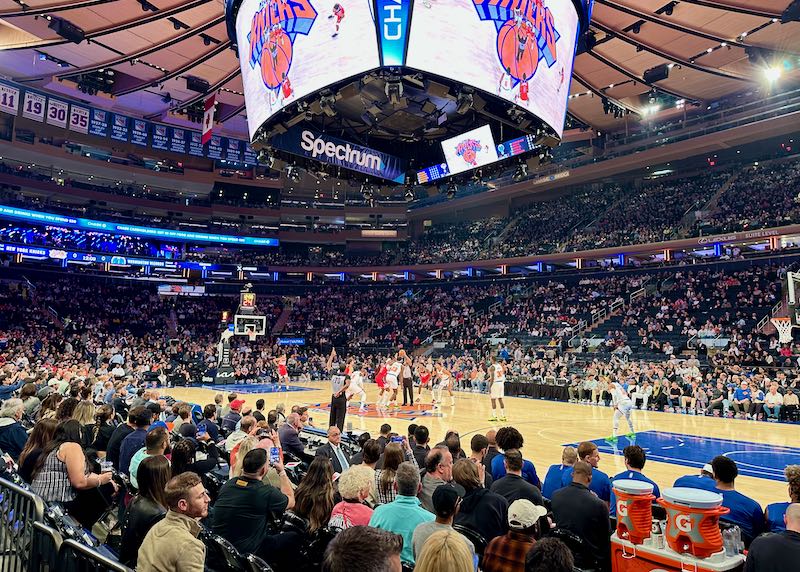
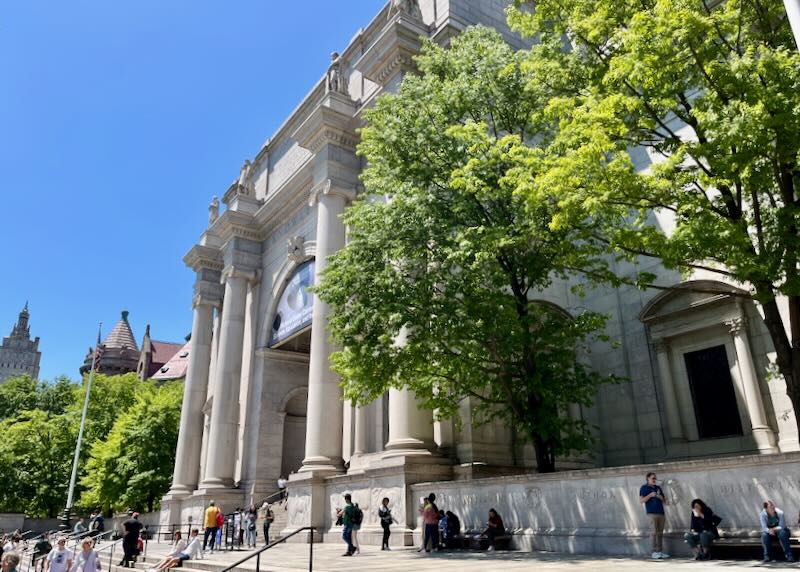
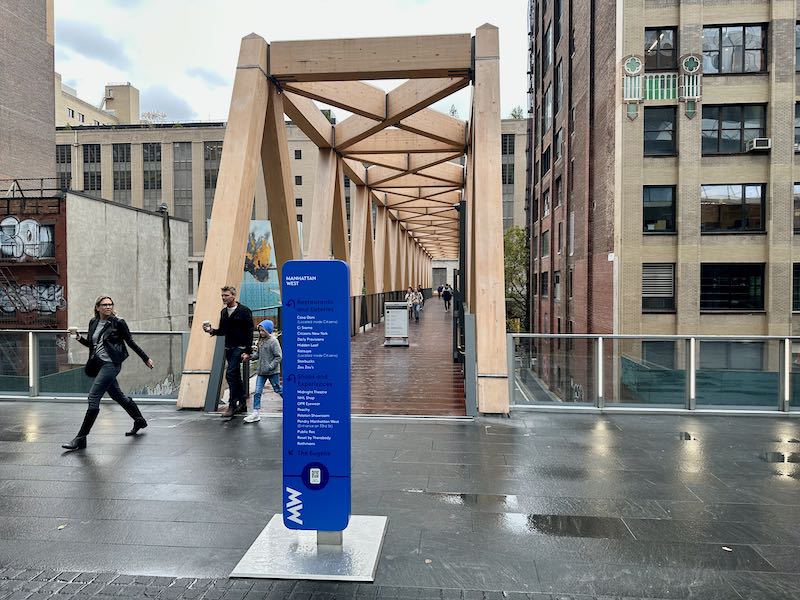
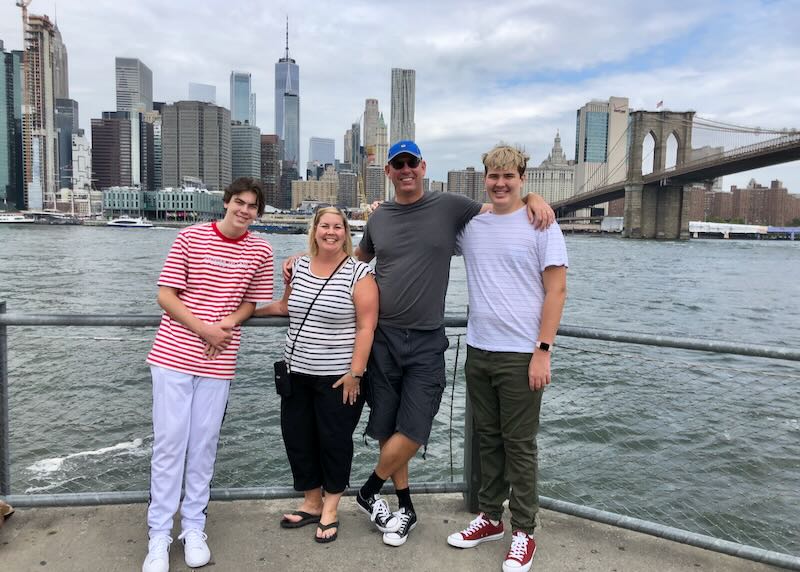
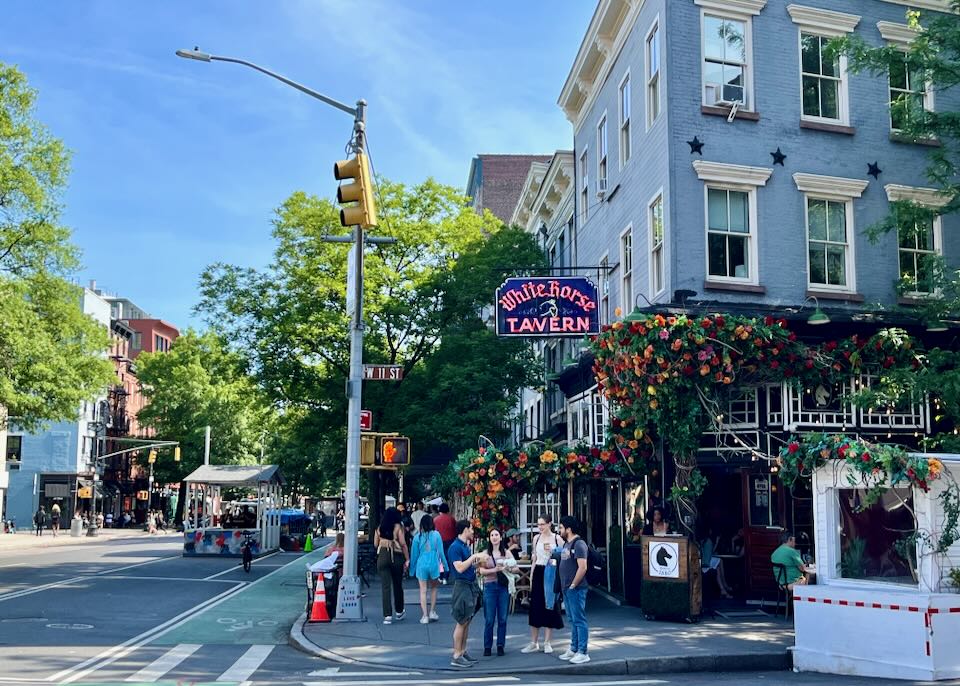
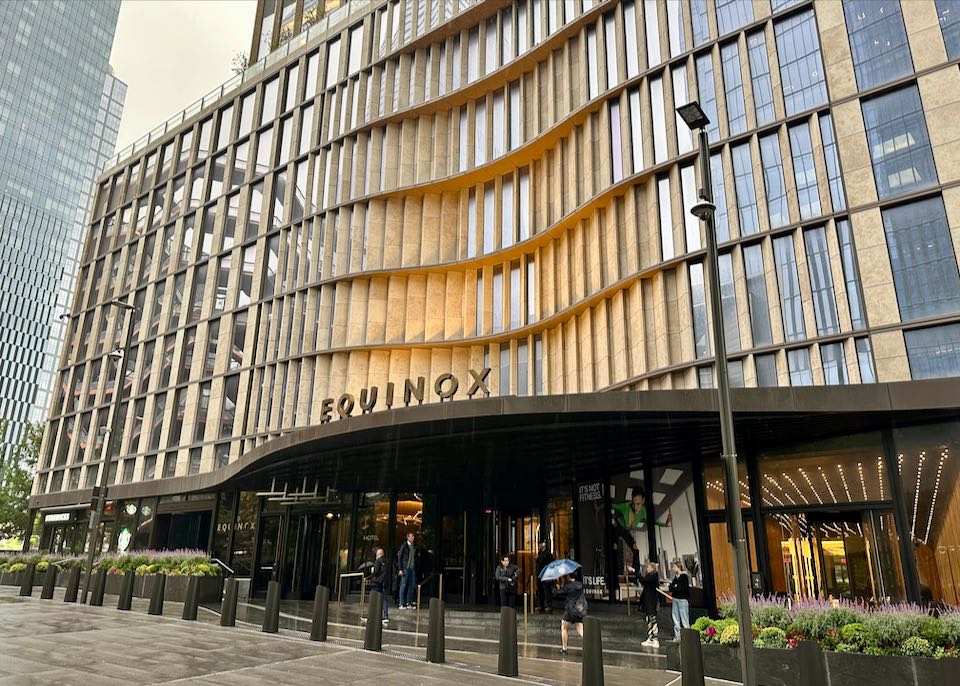
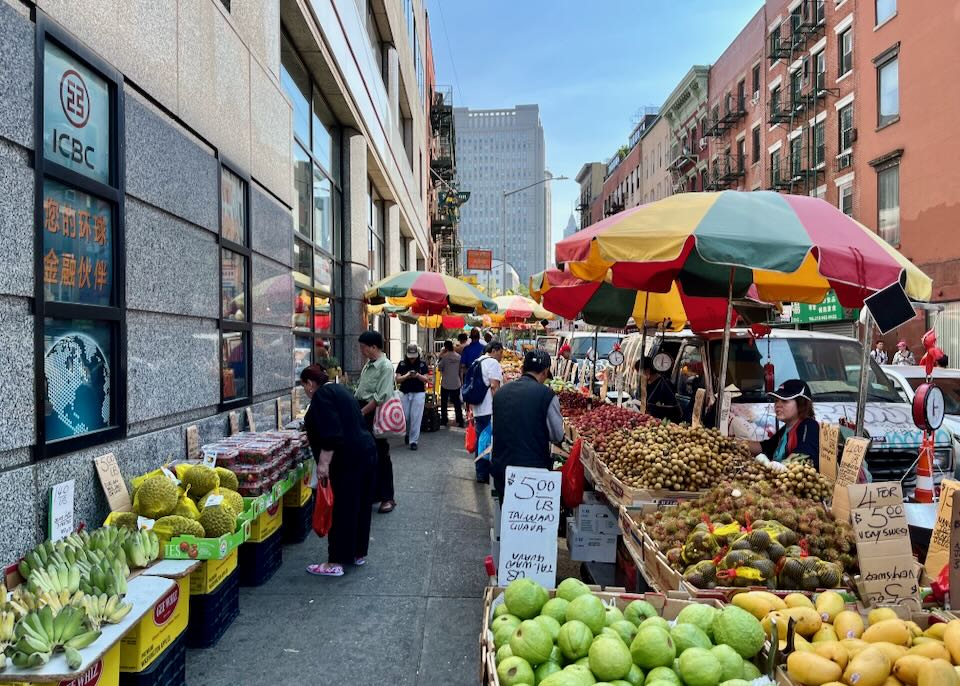
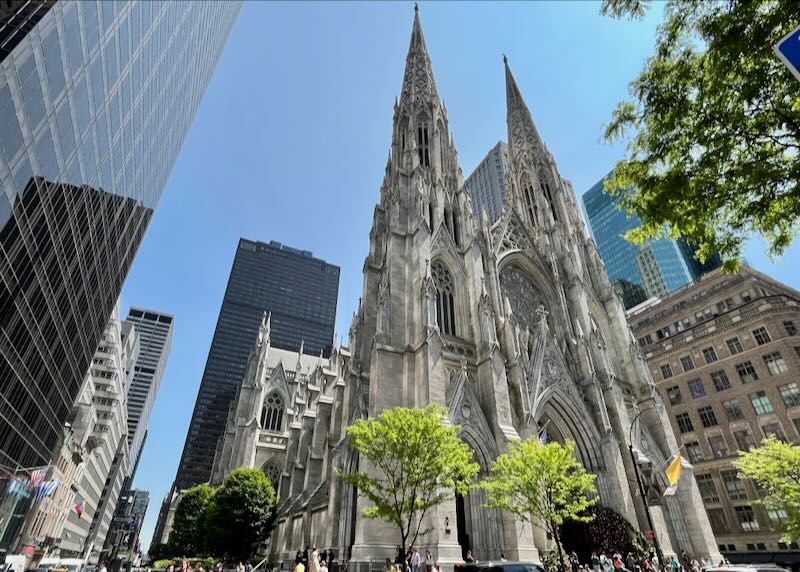

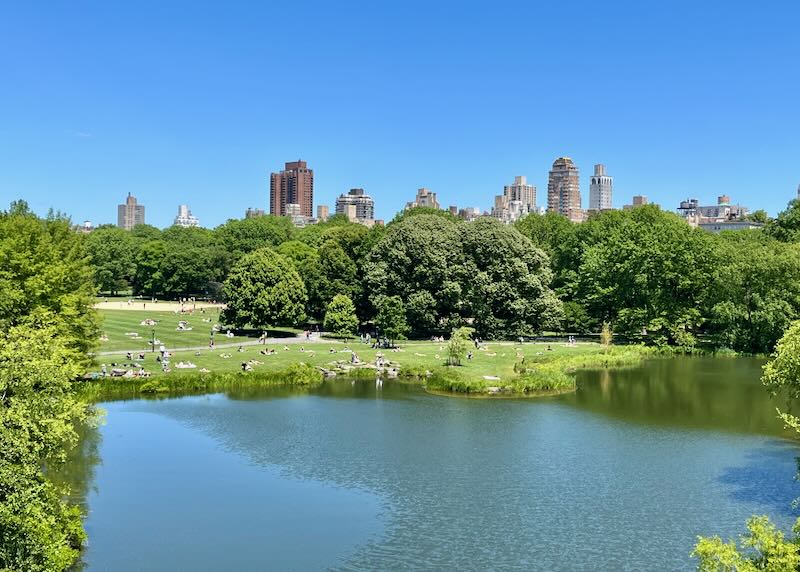

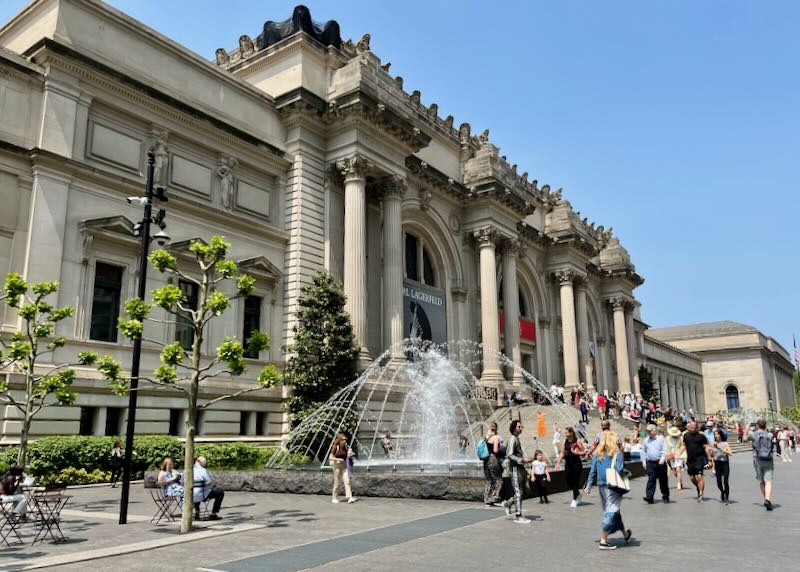

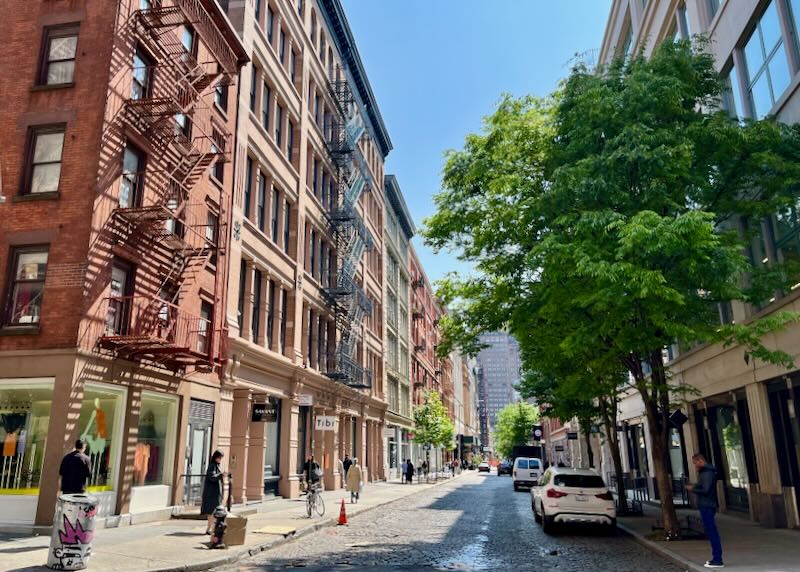

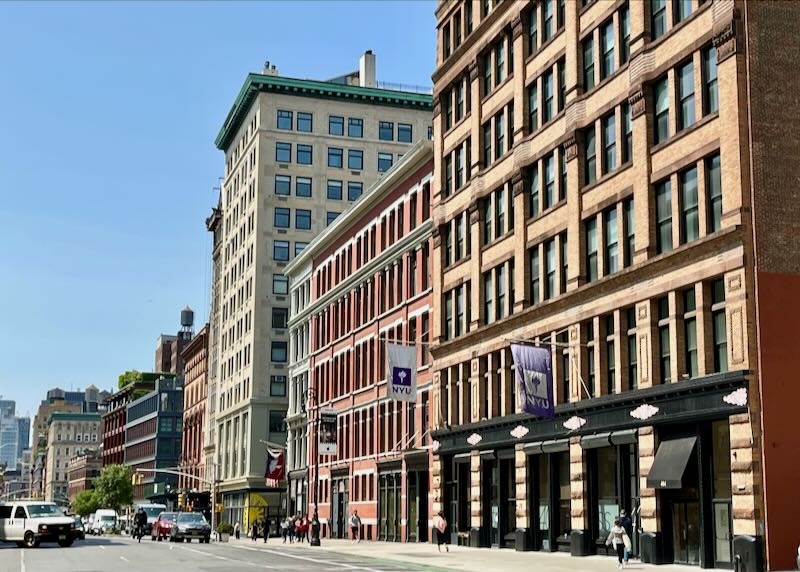

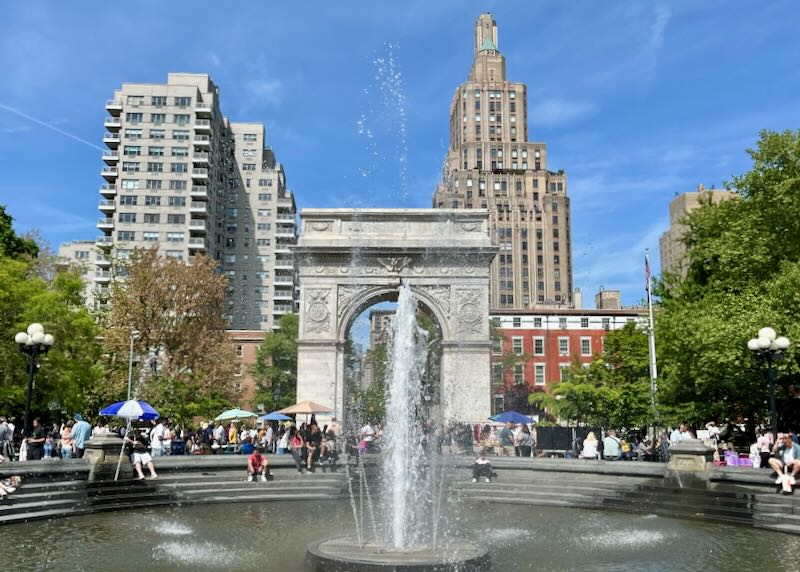

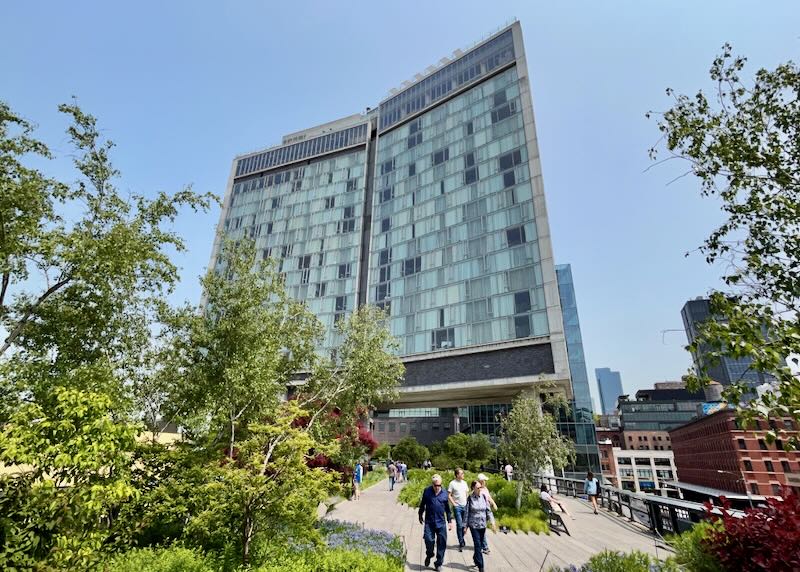

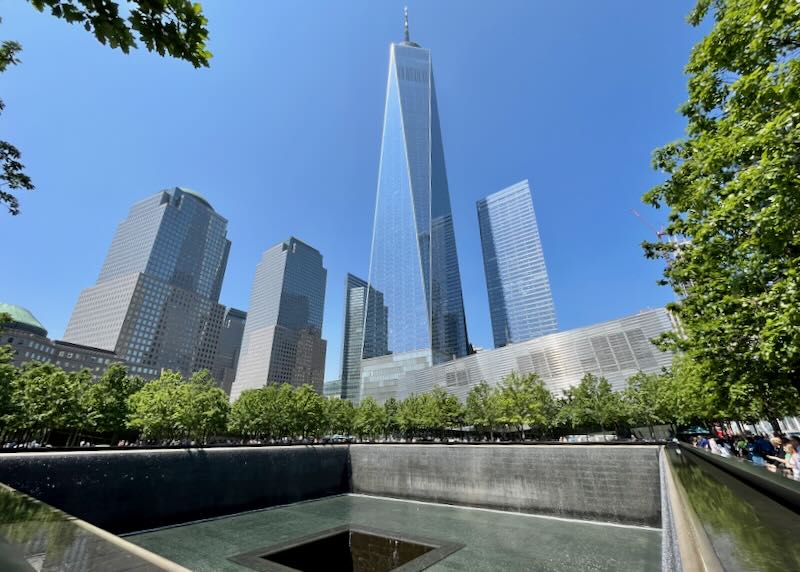

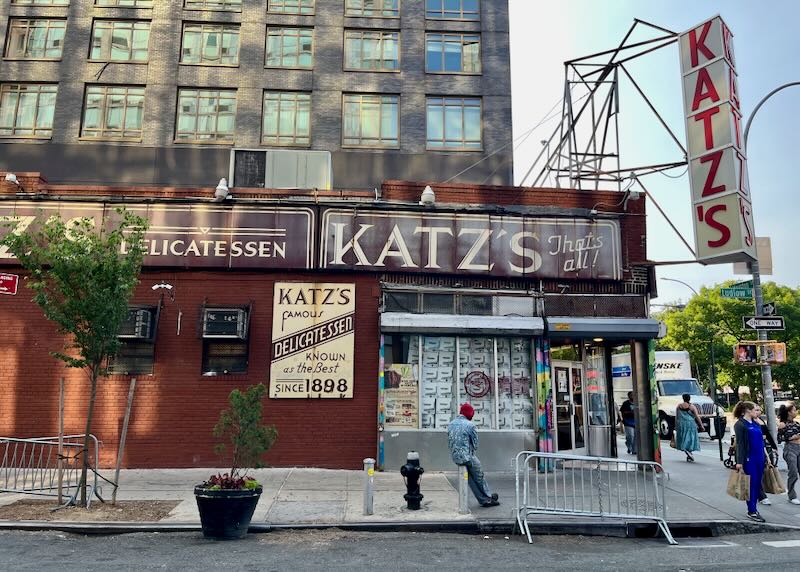

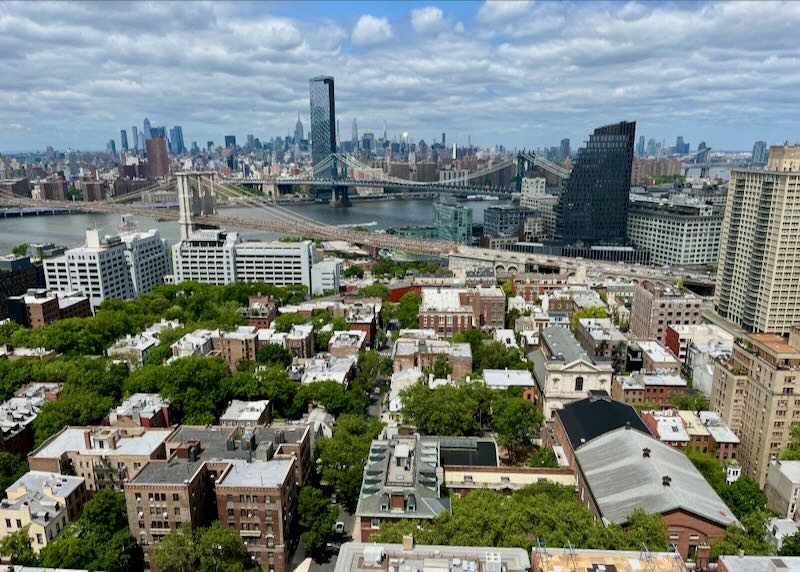

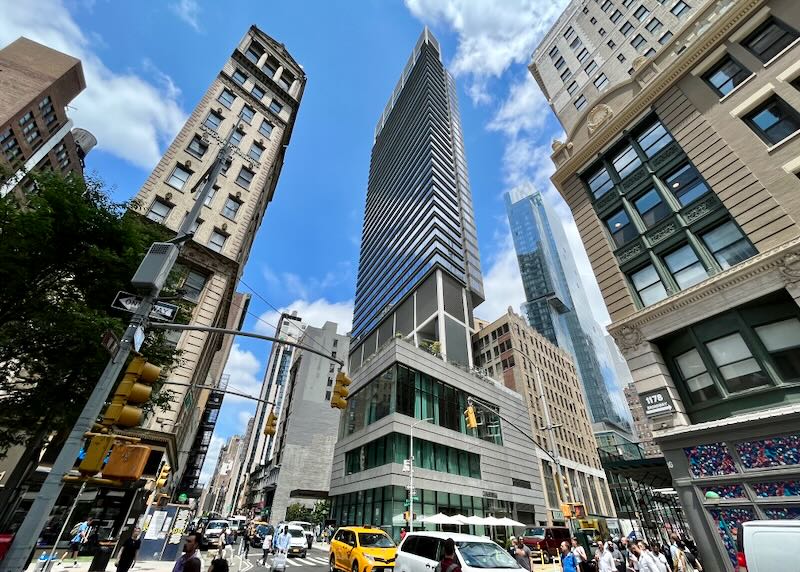
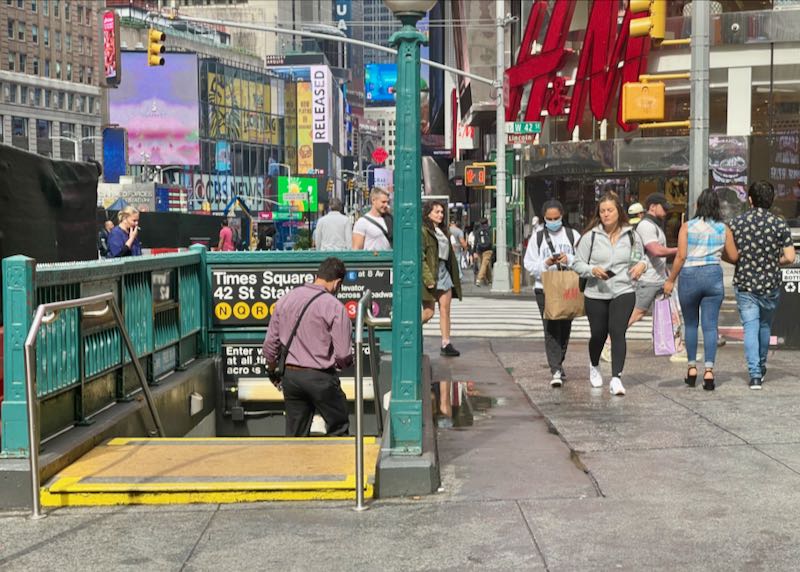
You are right on point with recommendations for NYC!
Angelique
Thanks Angelique.
We are considering staying in Brooklyn to save money on a cheap hotel. Is this worth the money? Is it easy to commute from Brooklyn to Manhattan for sightseeing in NYC?
Brooklyn has some great areas and is a destination in its own right but (for most people) Manhattan is what they’re here to see and makes the best base for sightseeing. The big considerations are where in Brooklyn are you staying, how close is it to a subway stop, and how much money are you saving? If you are near a subway stop then getting into Manhattan will be quick and easy.
We are a family of 4 with two teens. Going to NYC for 1st time in October. Please can you advise on how to find a hotel that has interconnecting rooms. Need main room with double bed and connecting room with 2 separate beds. All searches so far come up with 2 doubles. Or would we need to have 2 seperate rooms? Thank you.
Interconnected rooms are rare. Take a look at the AKA Times Square. I’ve stayed here a few times. It has a great location and the 2-bedroom apartments with kitchens are perfect for families.
Hihi,
Will be travelling to New York this December for Christmas and New Year for Times Square. But the hotels near Times Square are so pricey. Would you help to recommend the good place to stay for a group of 3?
I suggest the Freehand Hotel in Midtown. It has cozy 3-bed and 4-bed rooms that are great value. (Some have boutique-style bunk beds.)
Would you recommend Airbnb for Manhattan/Brooklyn? We are a family of 5 so apartment may suit us better and the AKA apartments you recommended have only 2 beds. I’ve heard that some Airbnb are not legal within NYC.
Thanks
I love the two-bedroom apartments at AKA and they do sleep five. Airbnb in New York City is a possibility but is very hit and miss. I’d stick with the hotel.
Hey! Thank you for posting all this amazing info. I am traveling solo to NYC for the first time and was thinking of staying in a hostel. What are your thoughts?
The HI NYC Hostel is the best hostel in NYC but it’s a little out of the way on the Upper West Side. Instead I’d recommend the Historical Blue Moon Hotel on the Lower East Side. It’s better located for bars, restaurants, and nightlife and almost as good.
First time in New York and staying at Homewood Suites by Hilton Edgewater NYC. Would like to know if this hotel is safe and can give us easy access to most tourist attractions like Times Square and the Statue of Liberty?
The hotel offers a free shuttle to the ferry terminal on the New Jersey side, then you take a ferry to Manhattan ($9, each way), and then another free shuttle to get you to a few different popular spots in the city. I wouldn’t call it convenient, but not terrible either.
Hi, traveling to NYC in April for the first time with families totaling 11 (age ranging from 3 to 79!). What sort of accommodation is best recommended for our group size – Airbnb or hotel, that are both clean, close to attractions and not cost us an arm. Thanks in advance for your guidance!
I think I would go with several rooms in a moderate hotel. Unless you can find an Airbnb for a large group – possible but not easy.
Loved this post! I’ve been to NYC a few times but always struggle to decide where to stay. You’ve given me some great ideas for my next trip – I think I’ll have to try the West Village this time!
I love hearing that our stuff has been helpful. That’s our goal. Thank you.